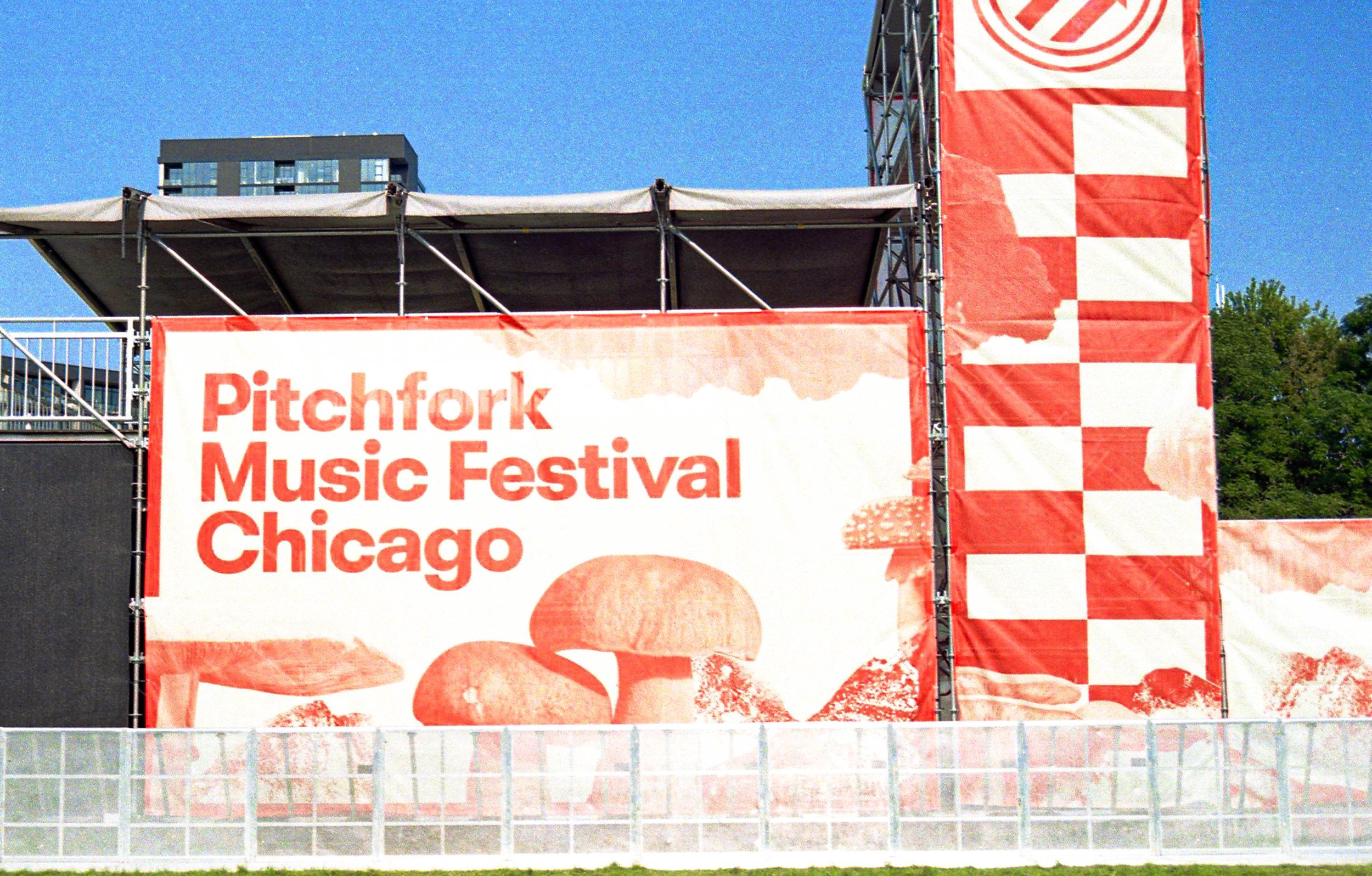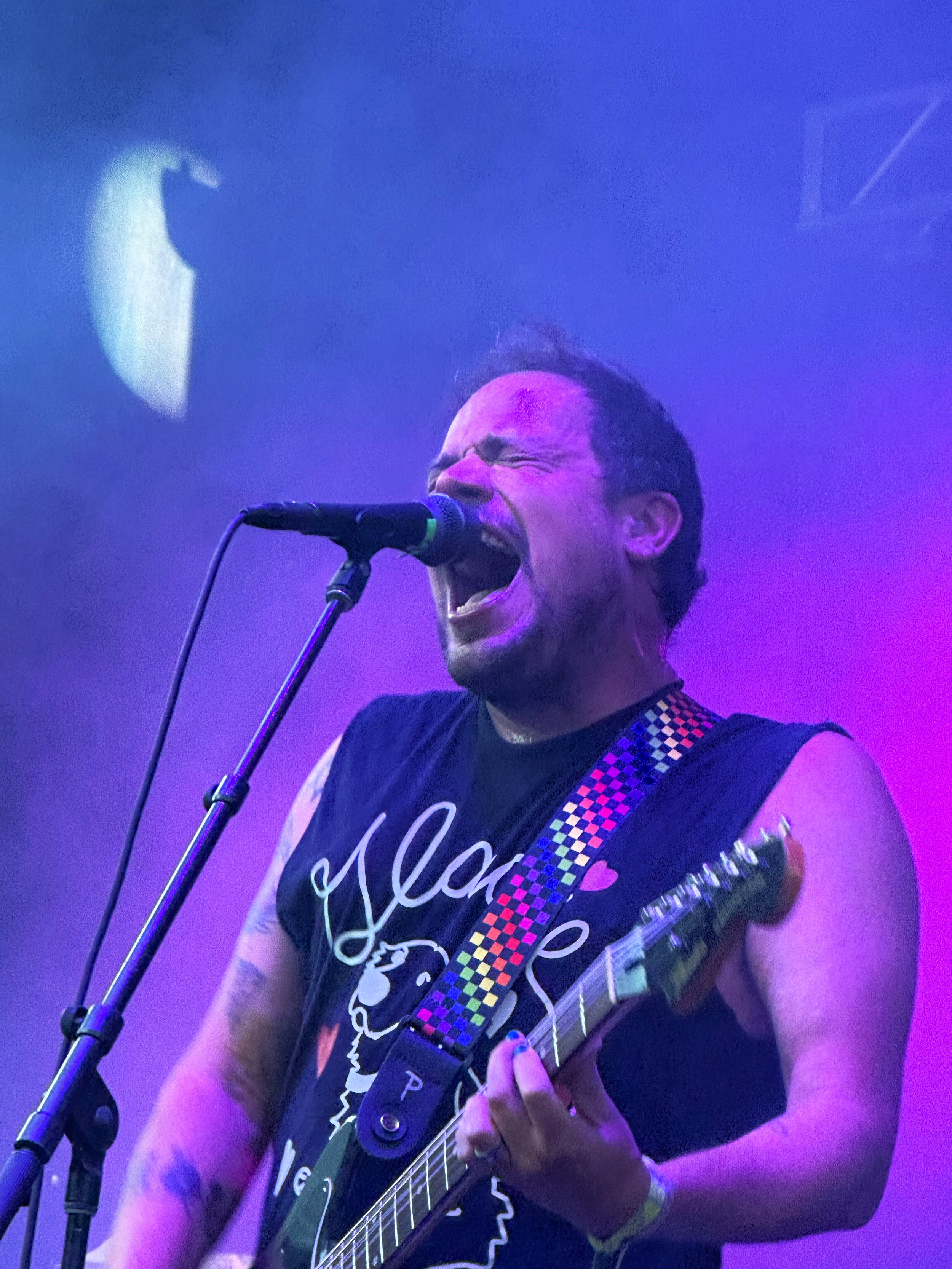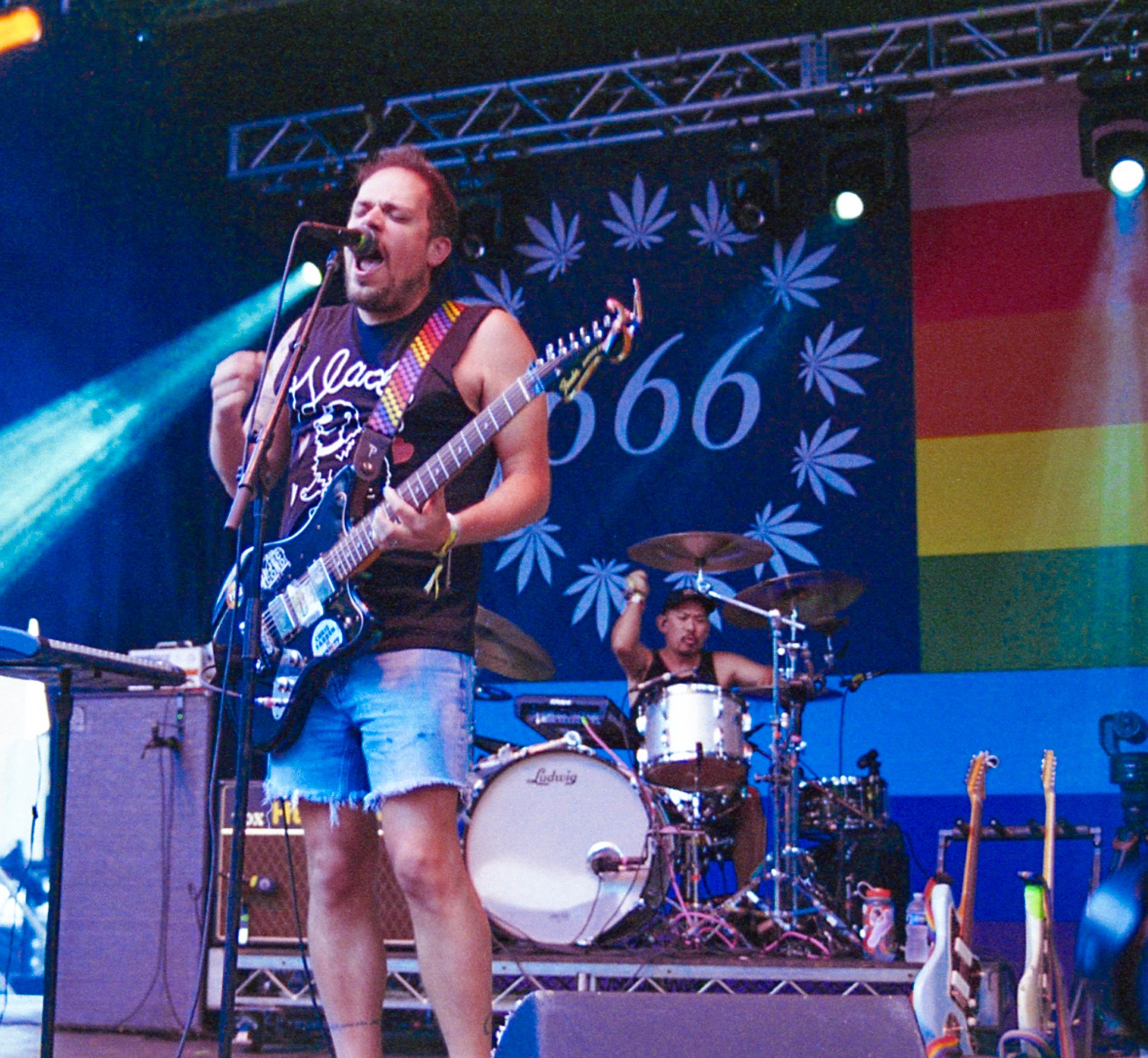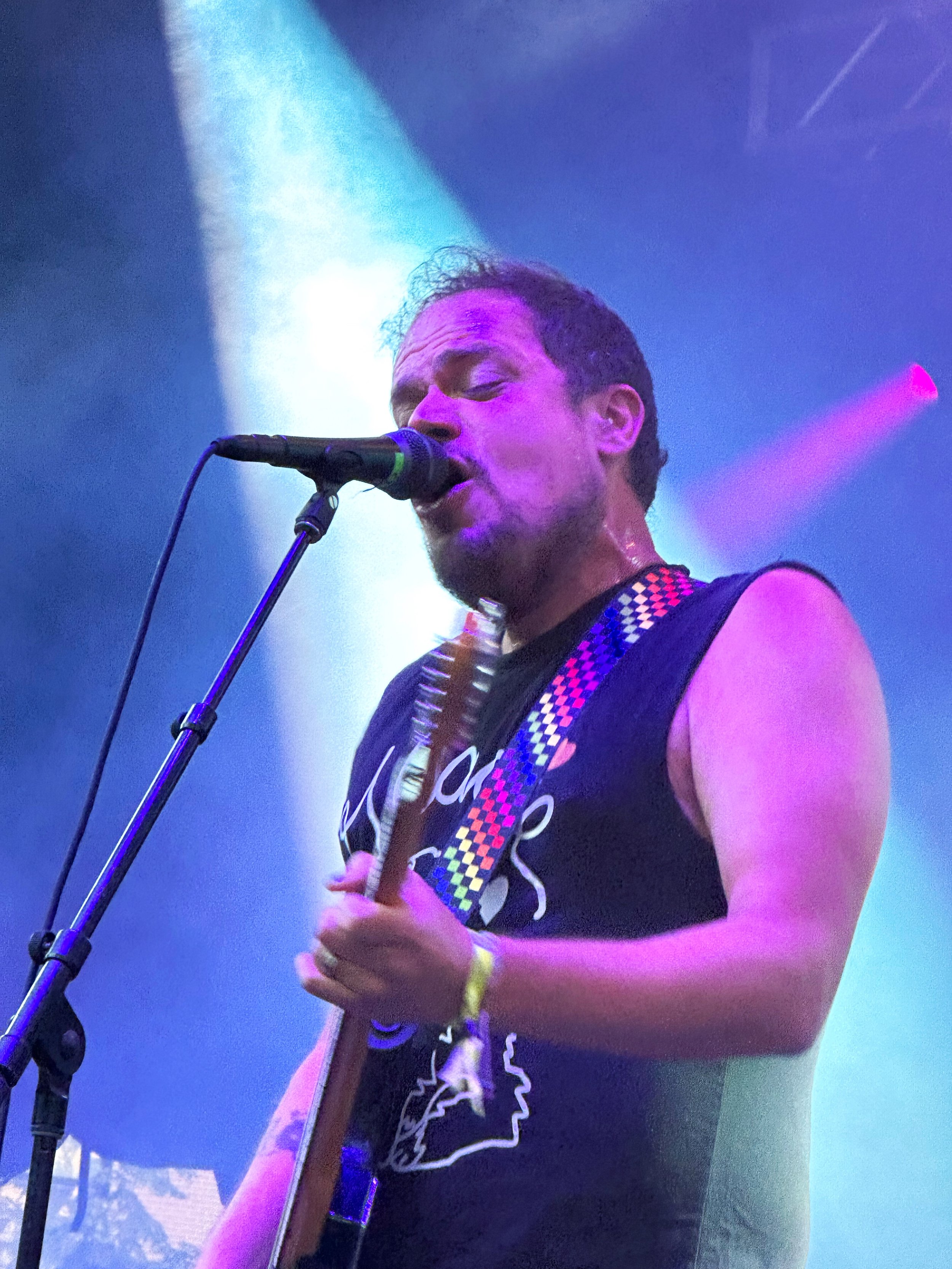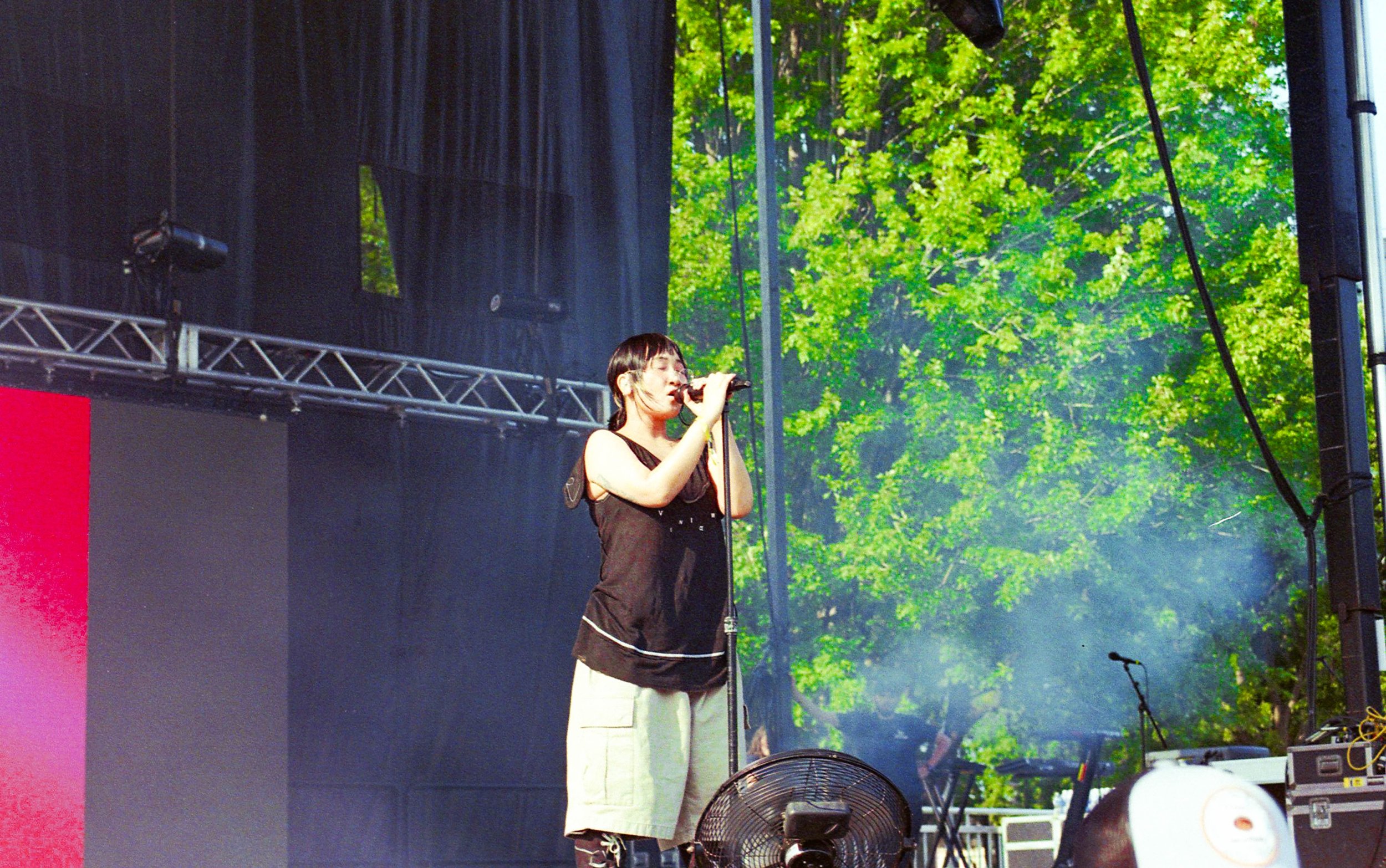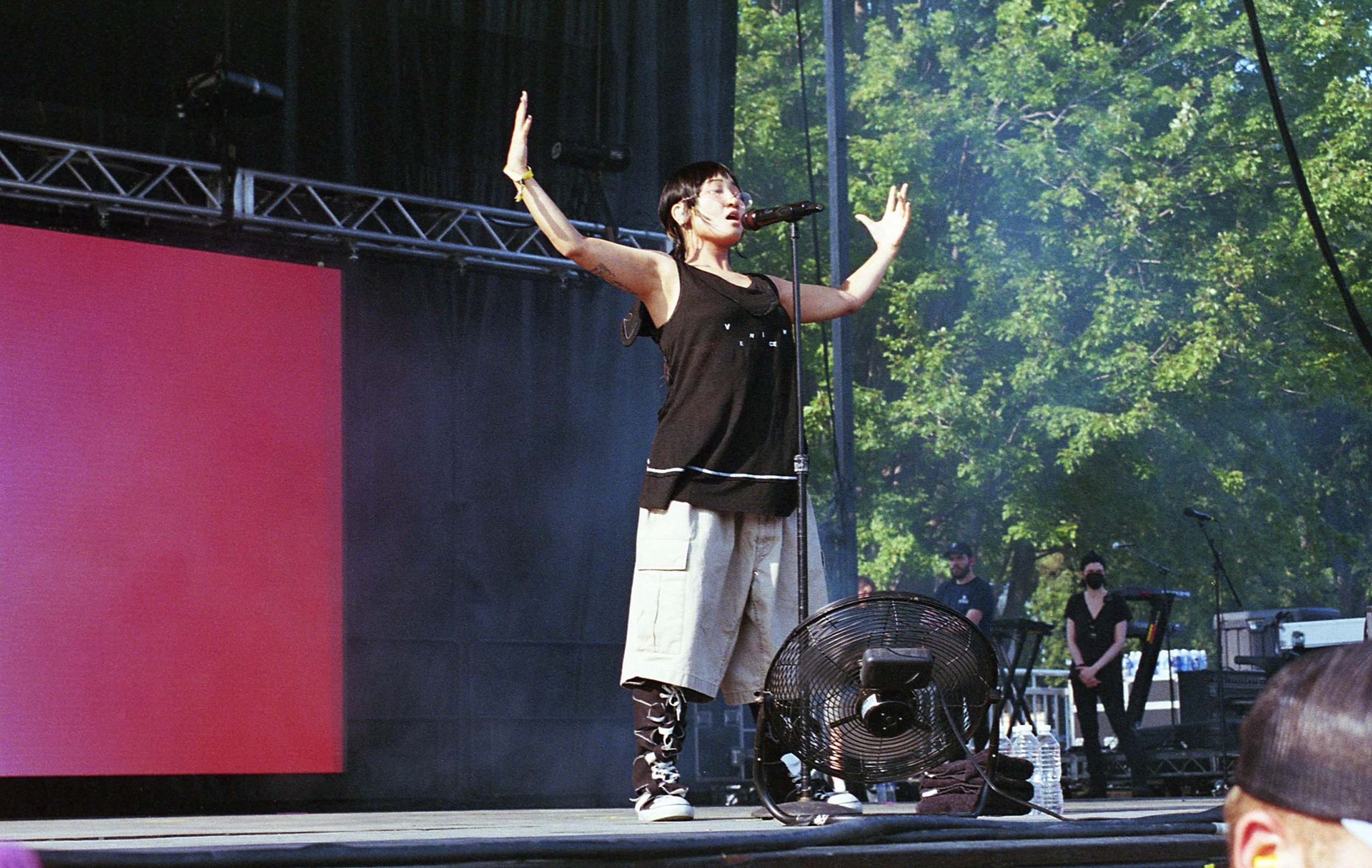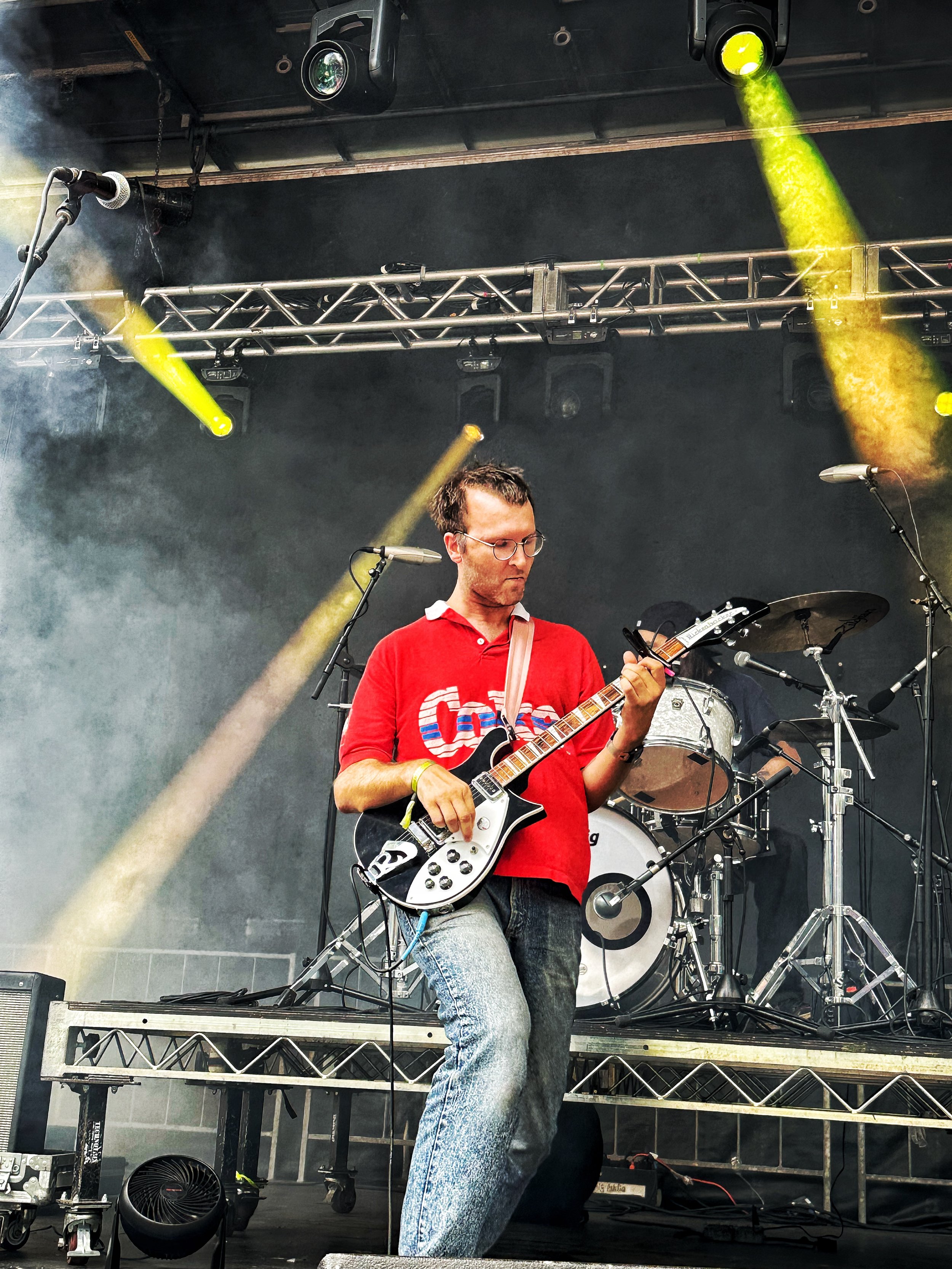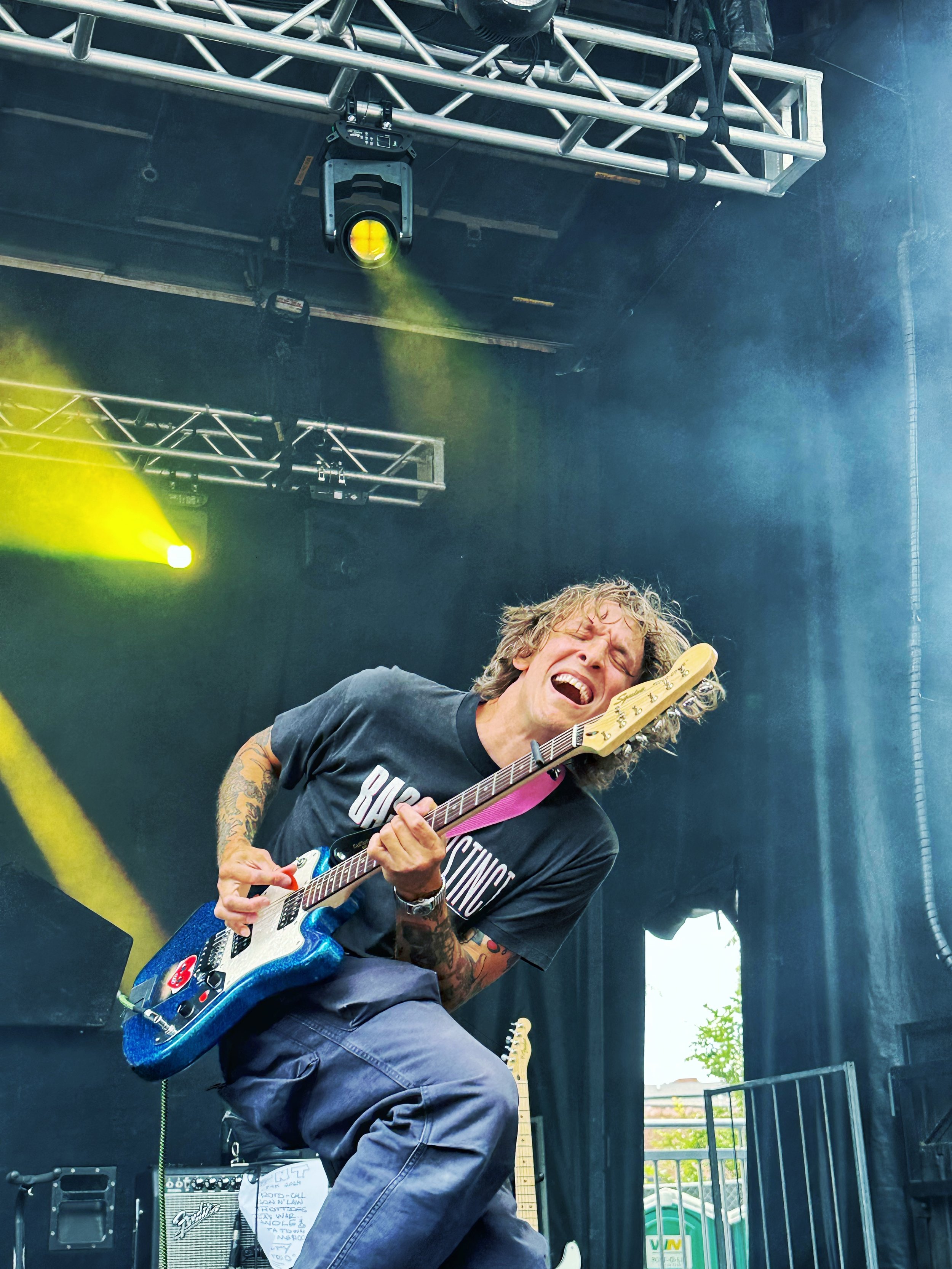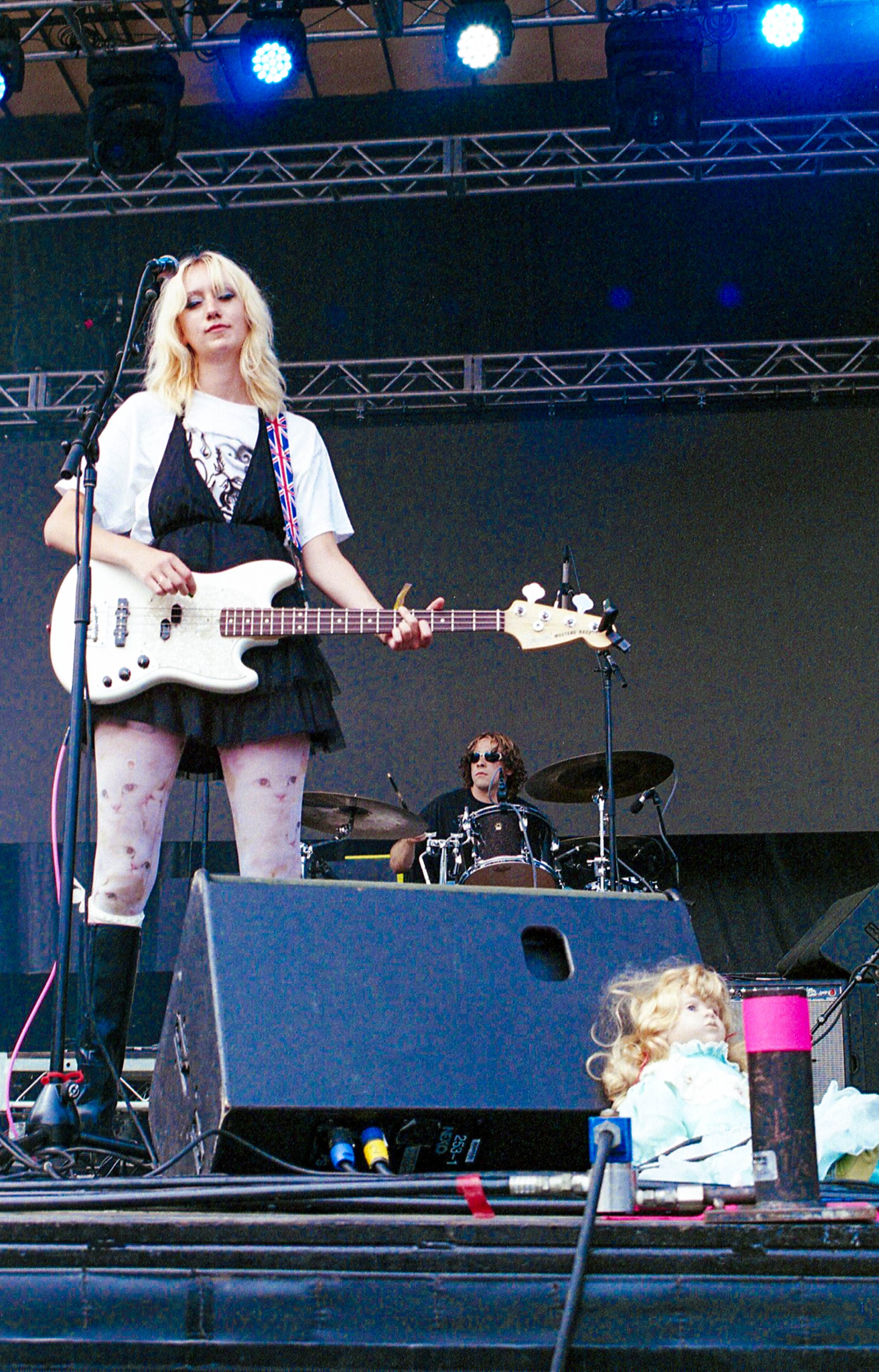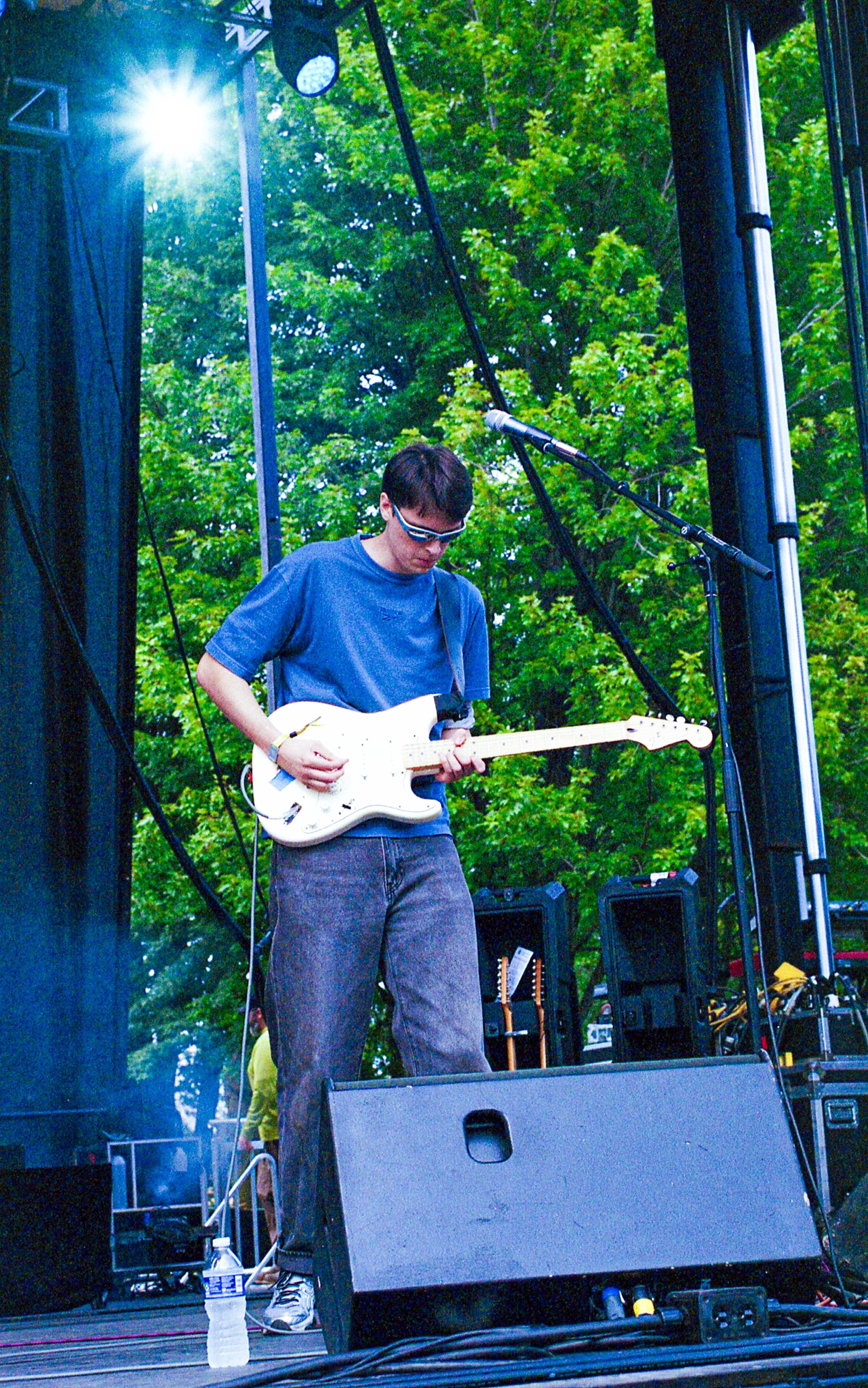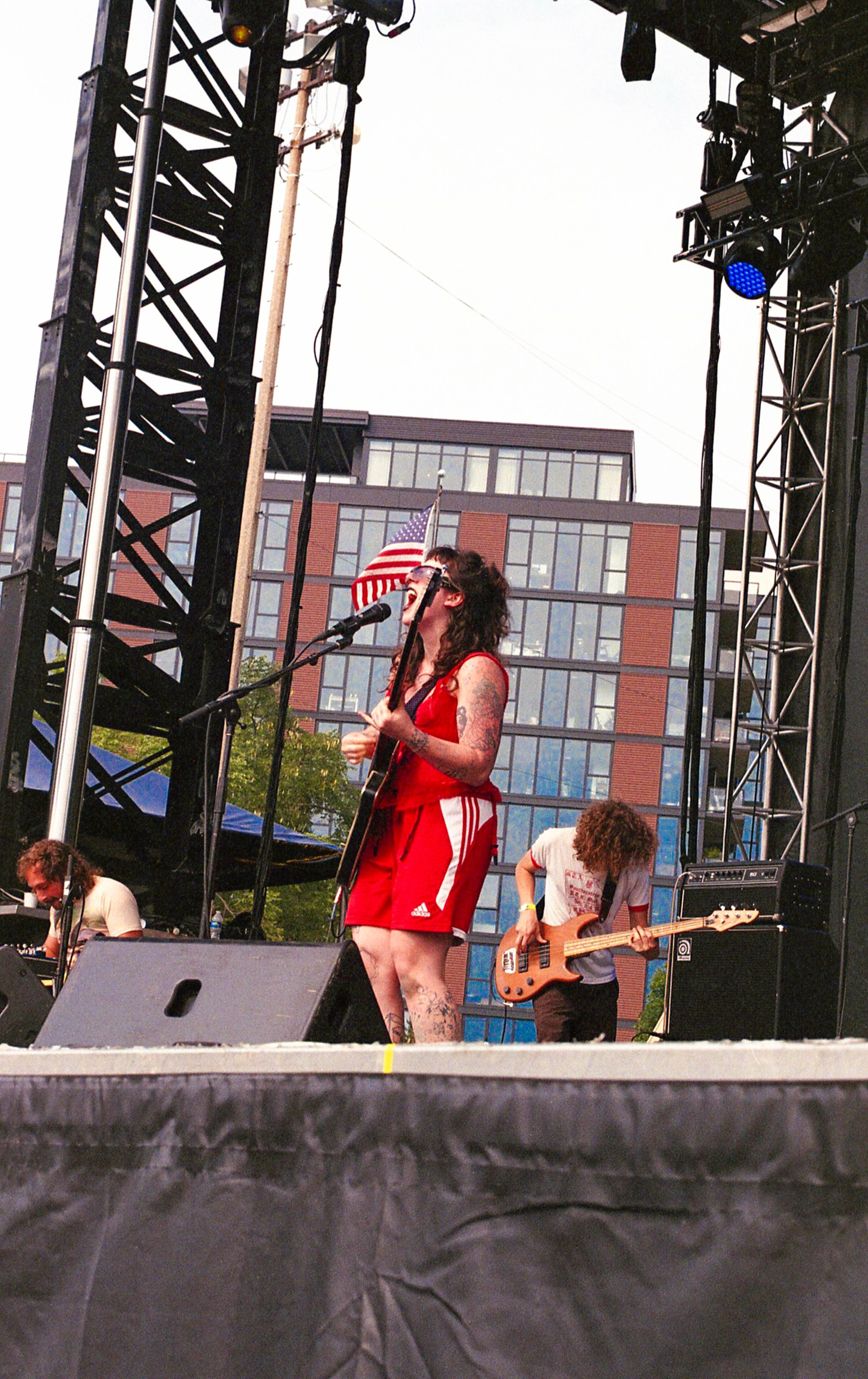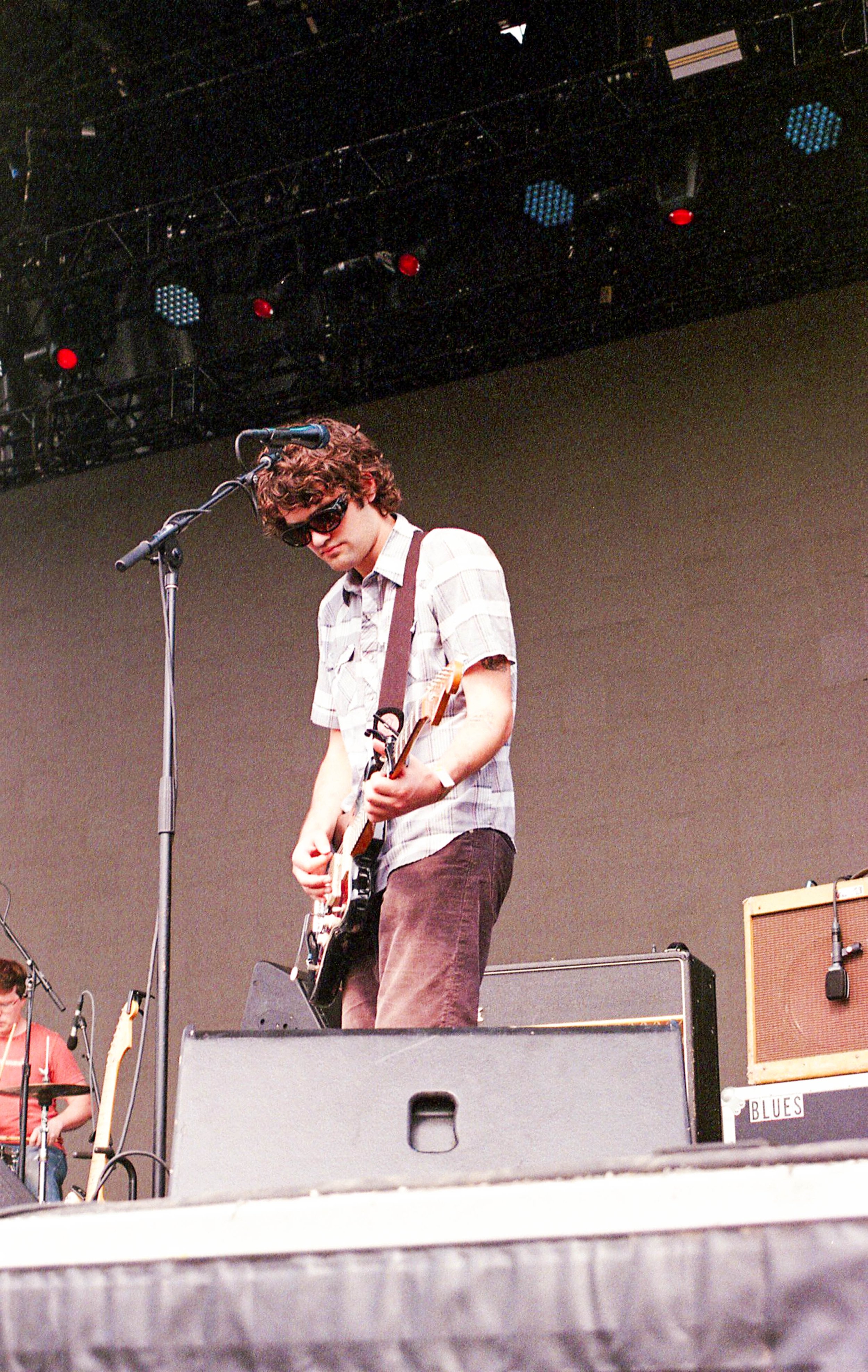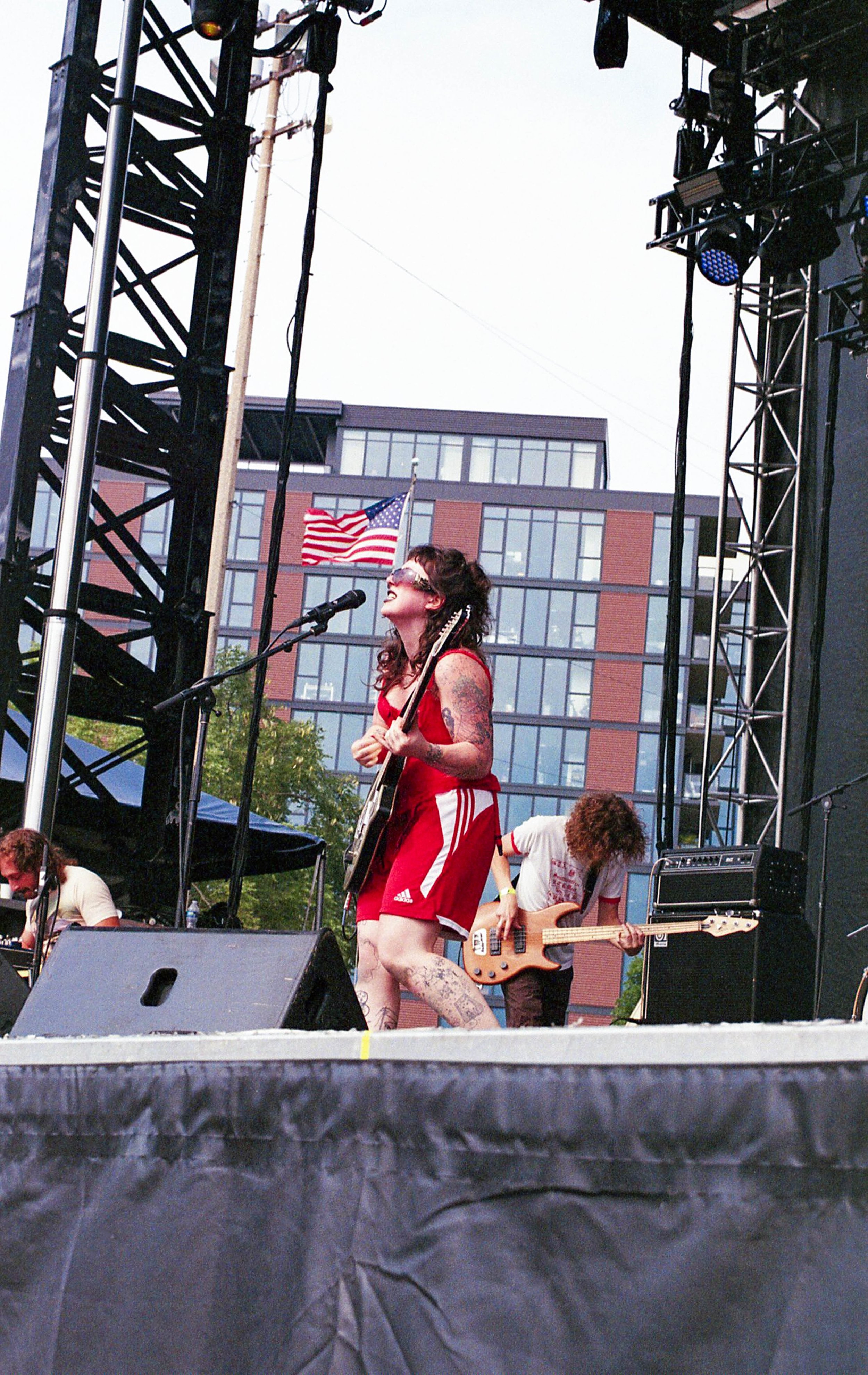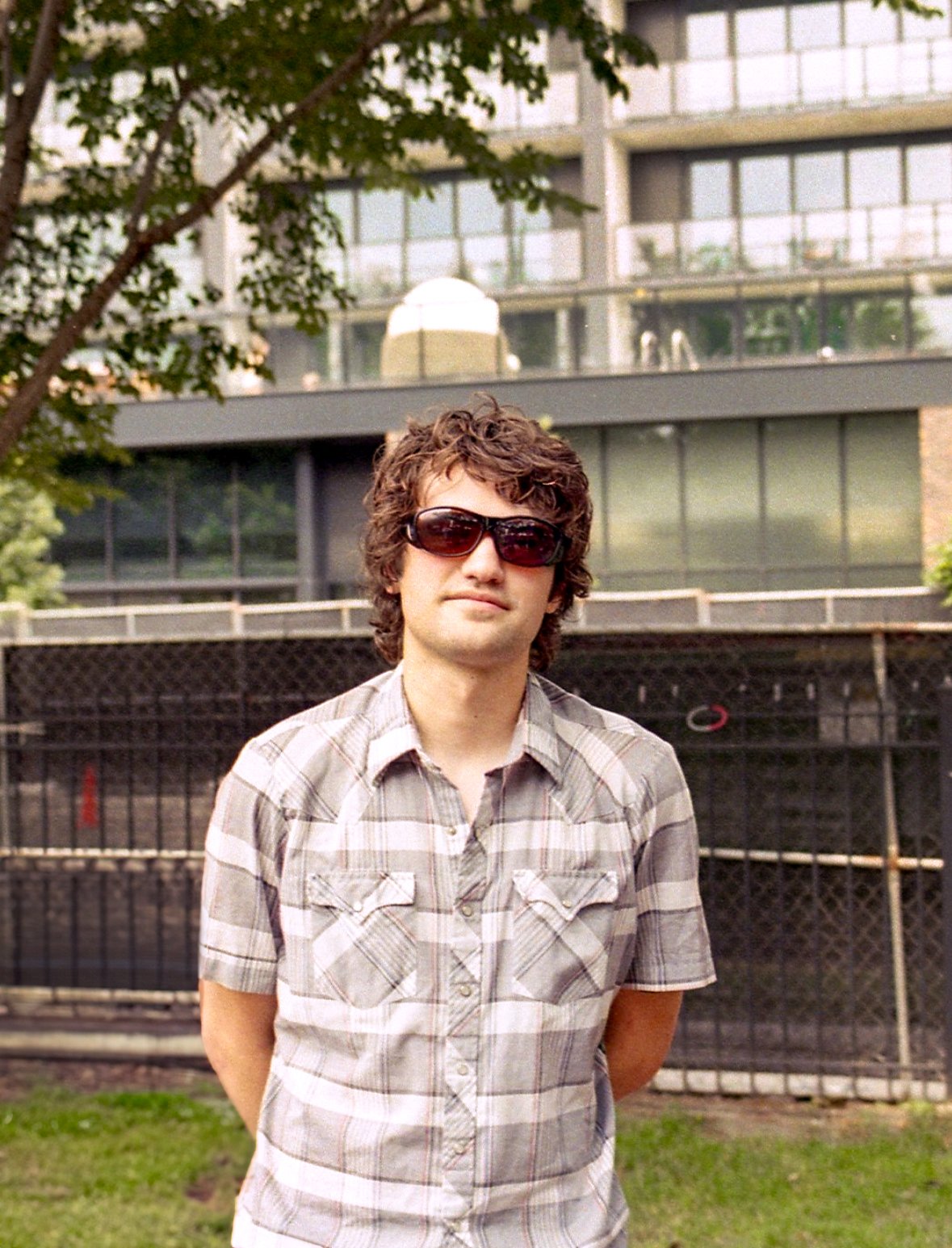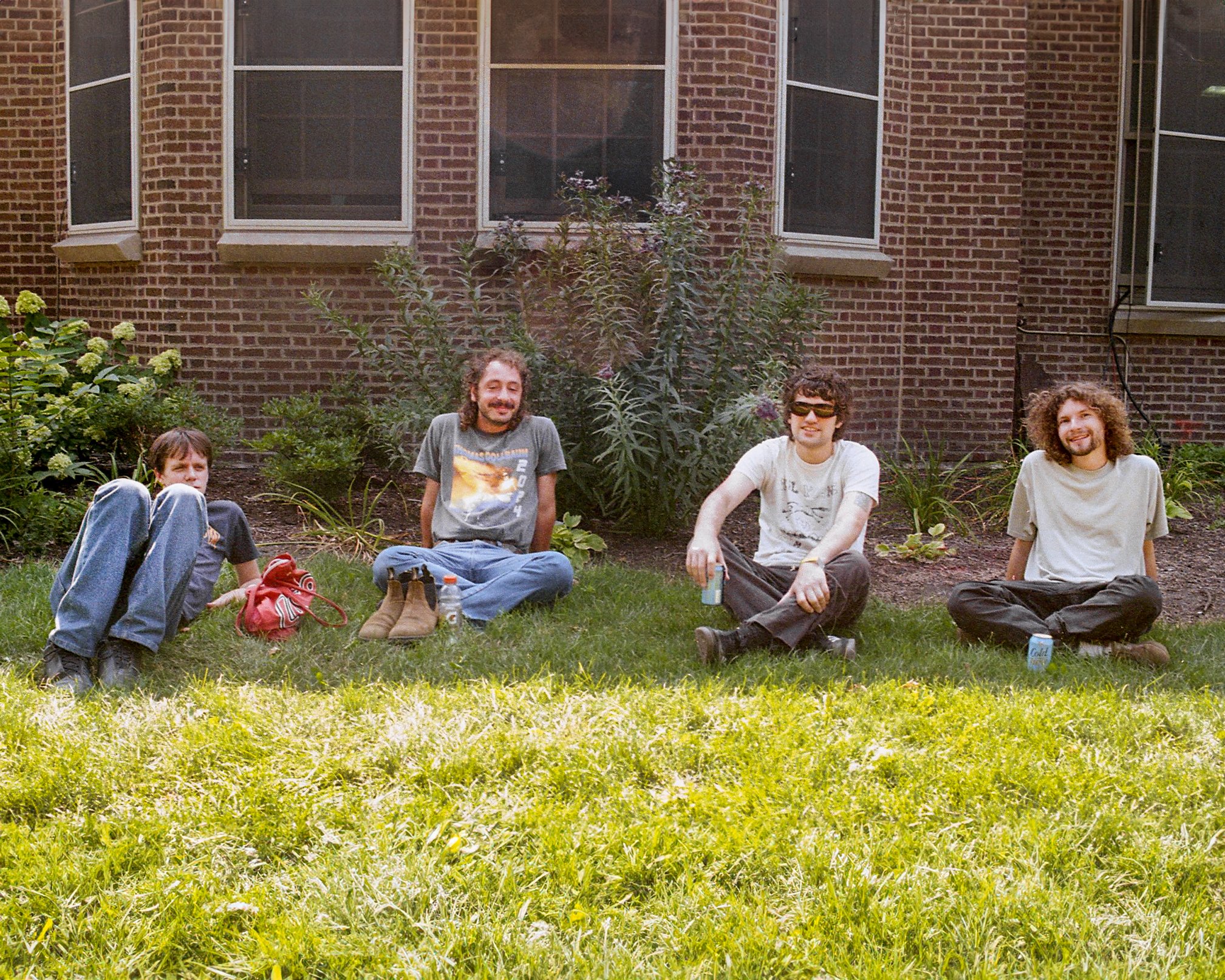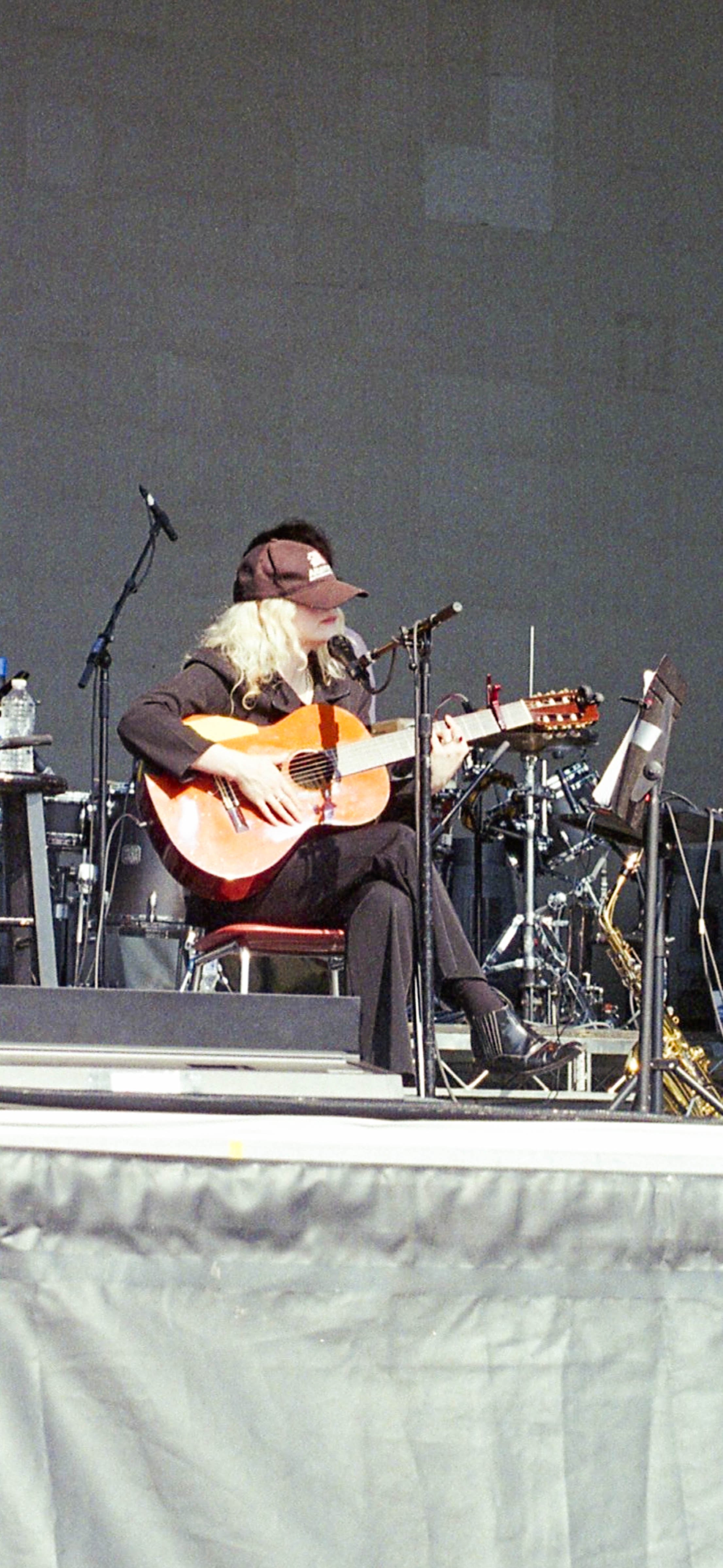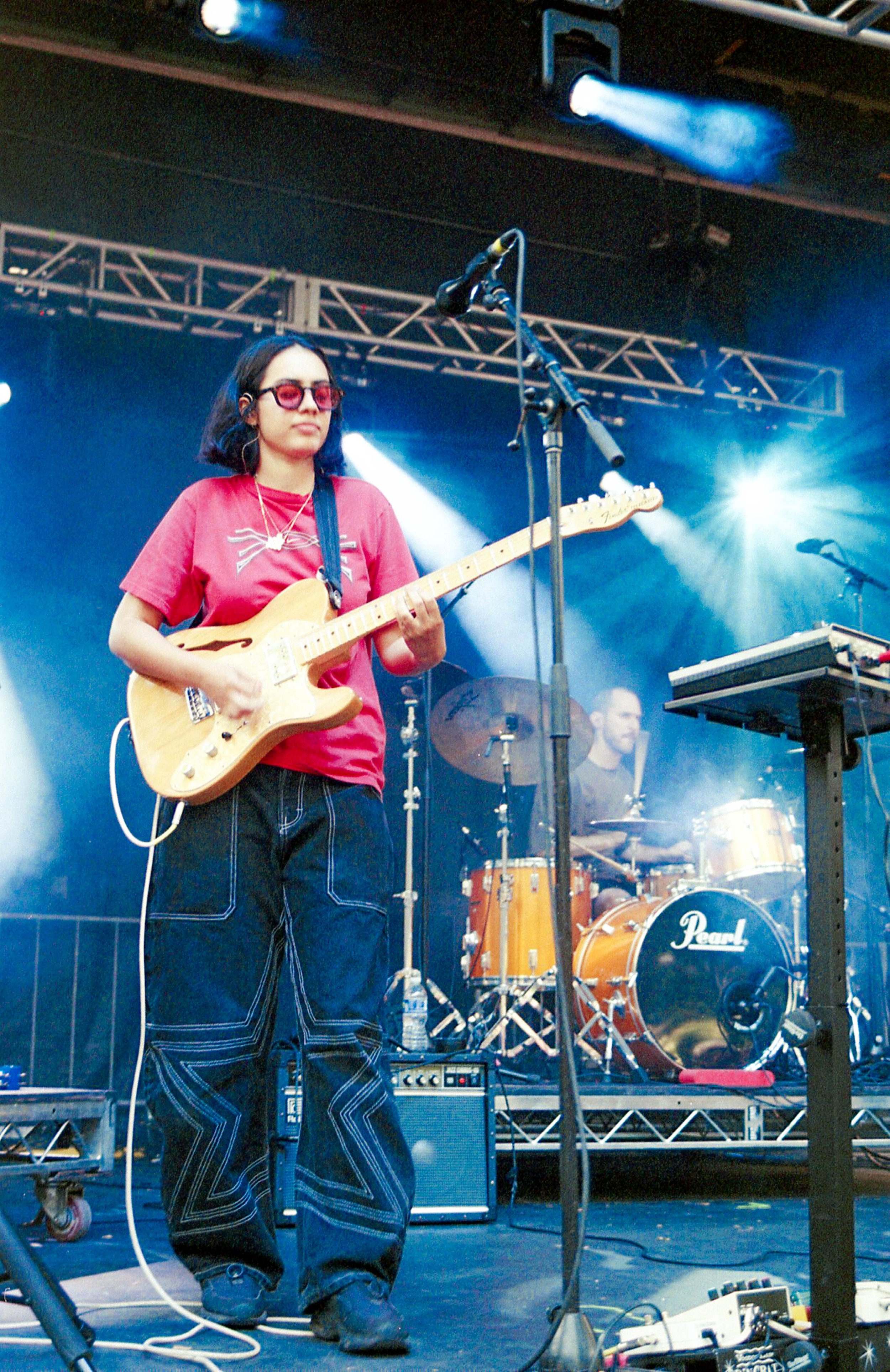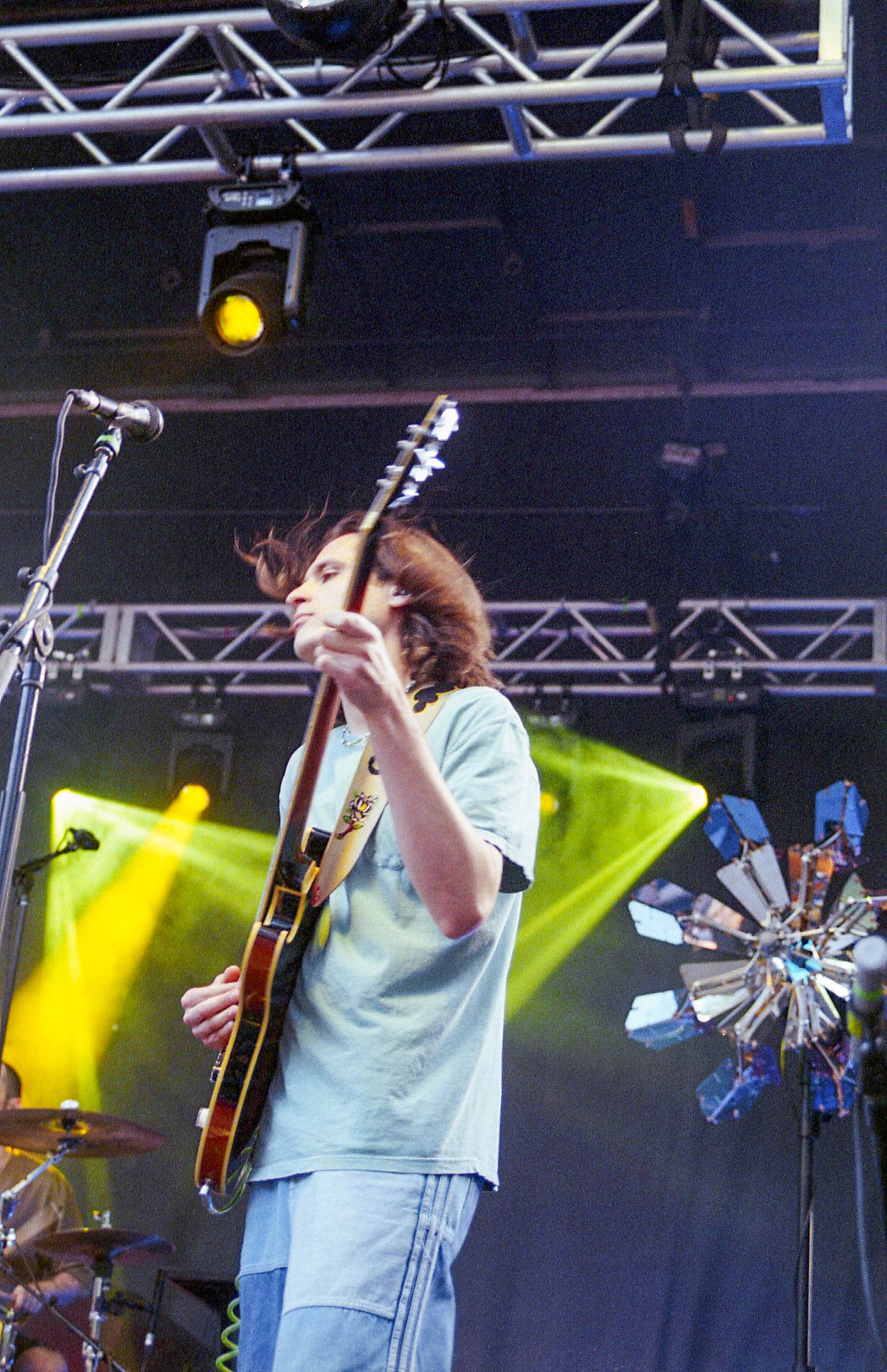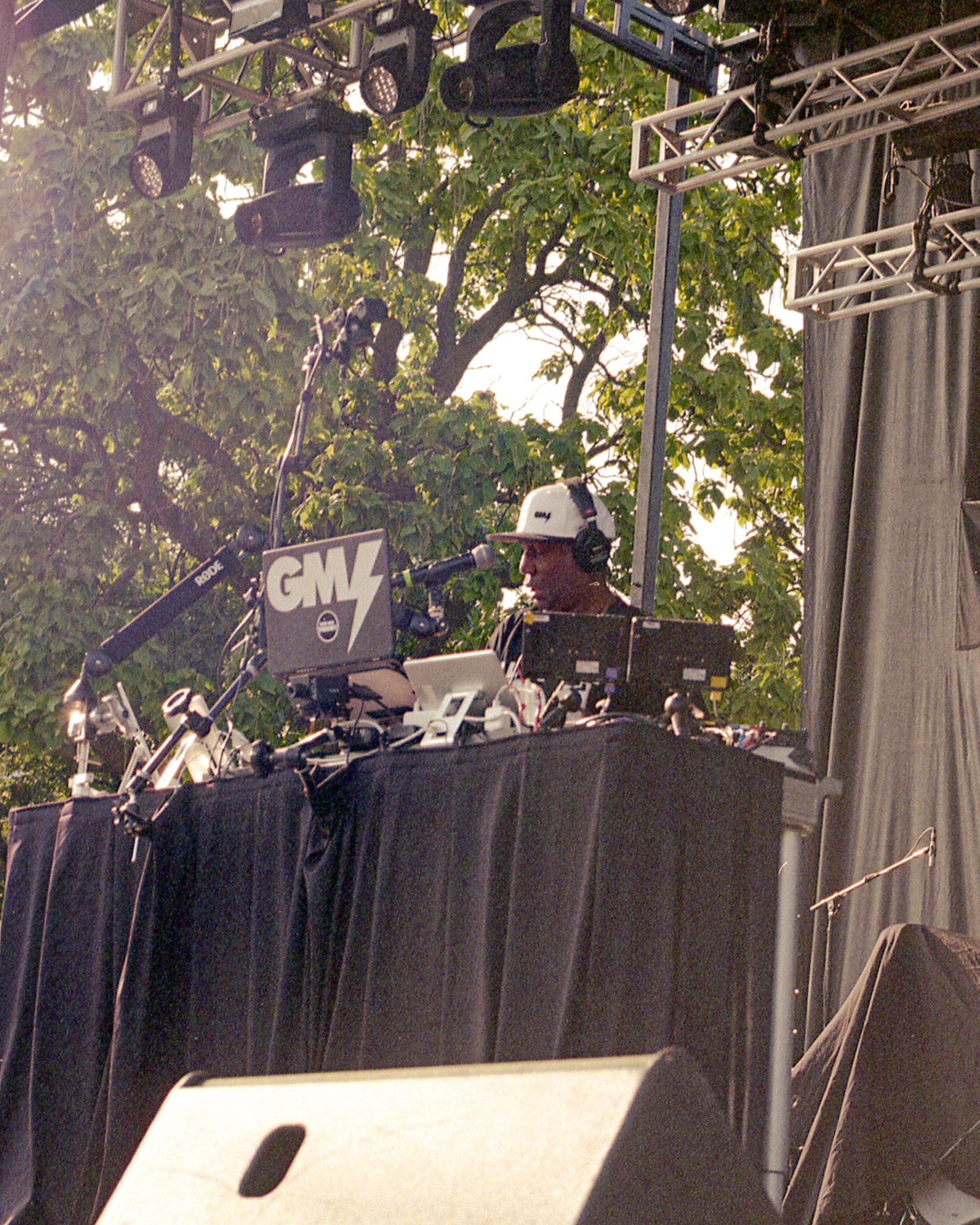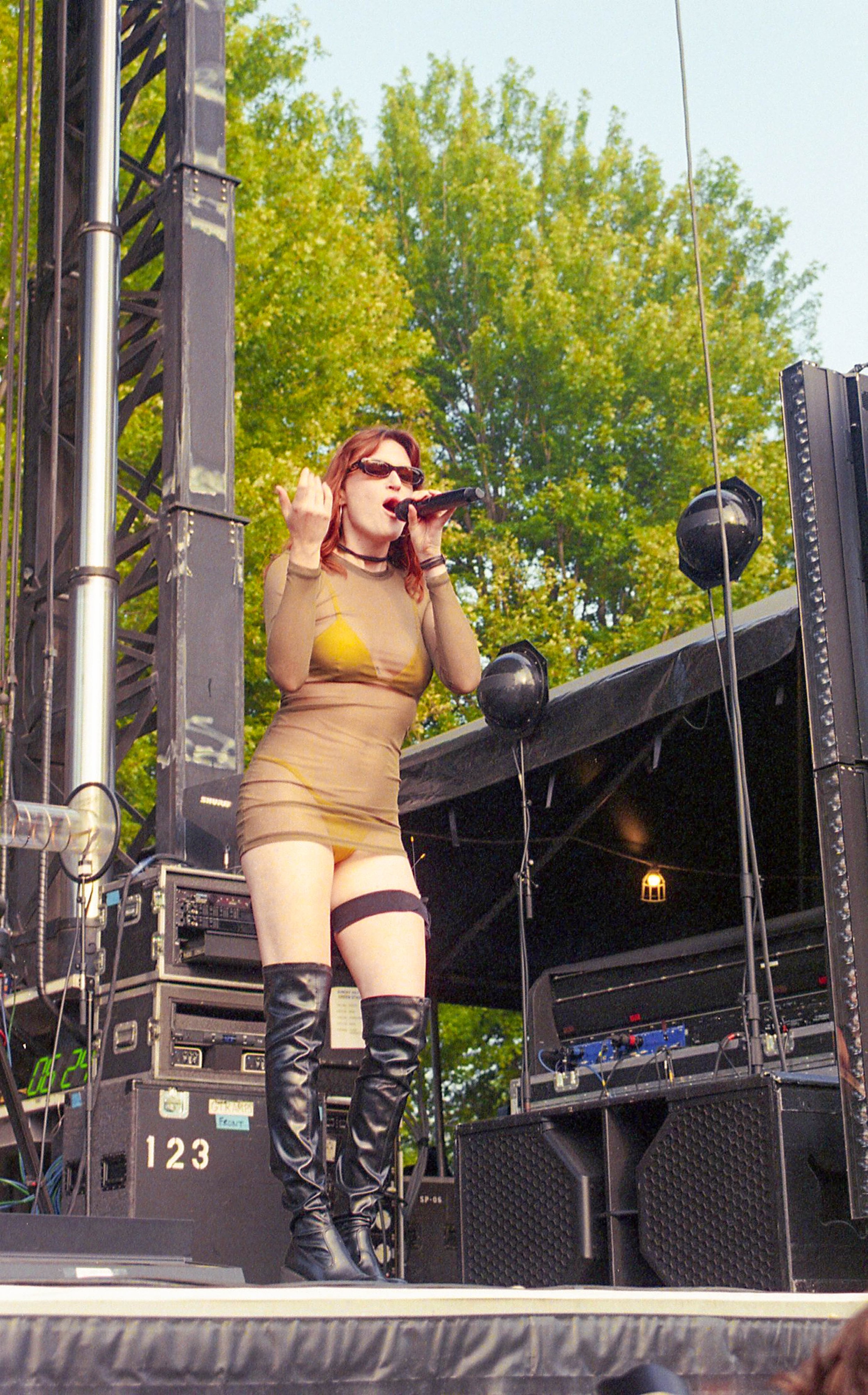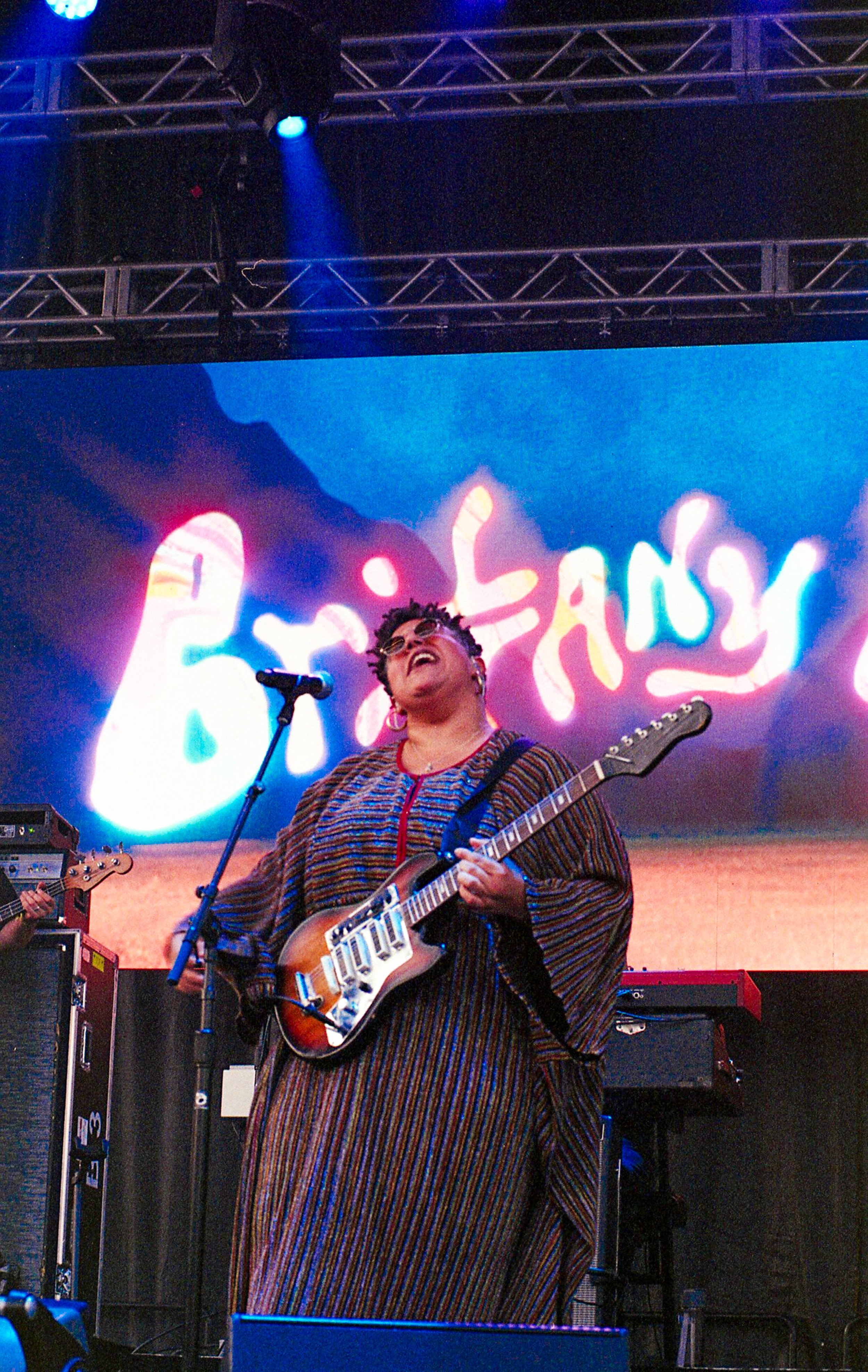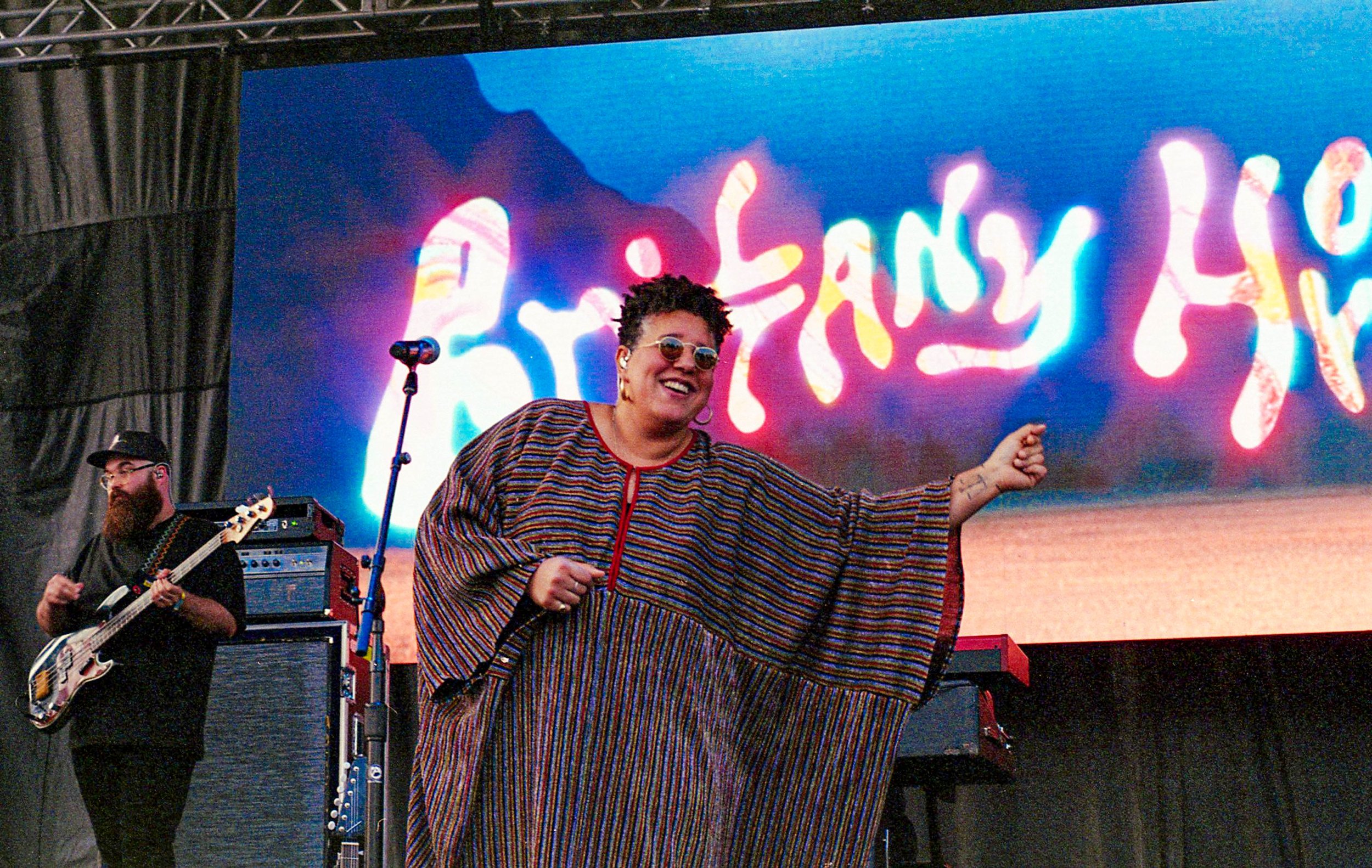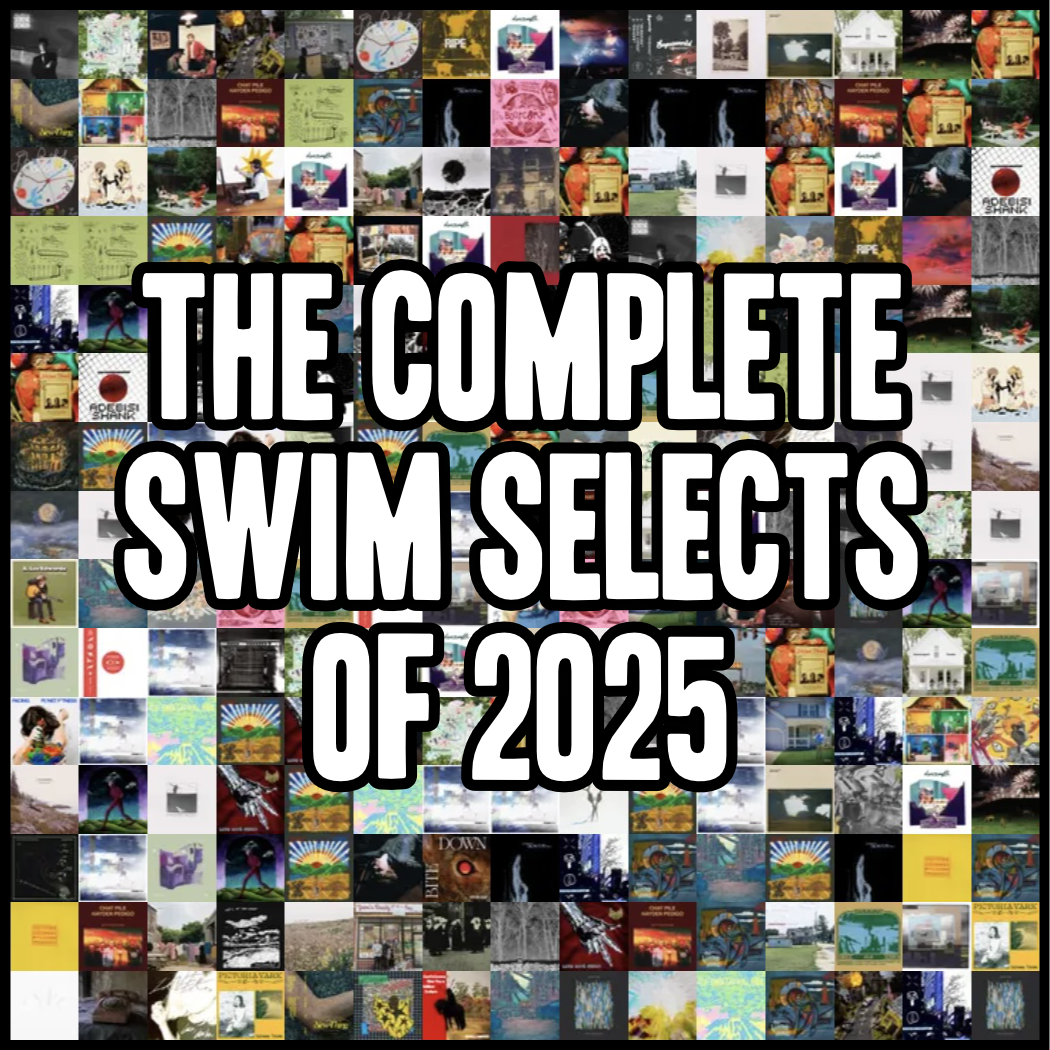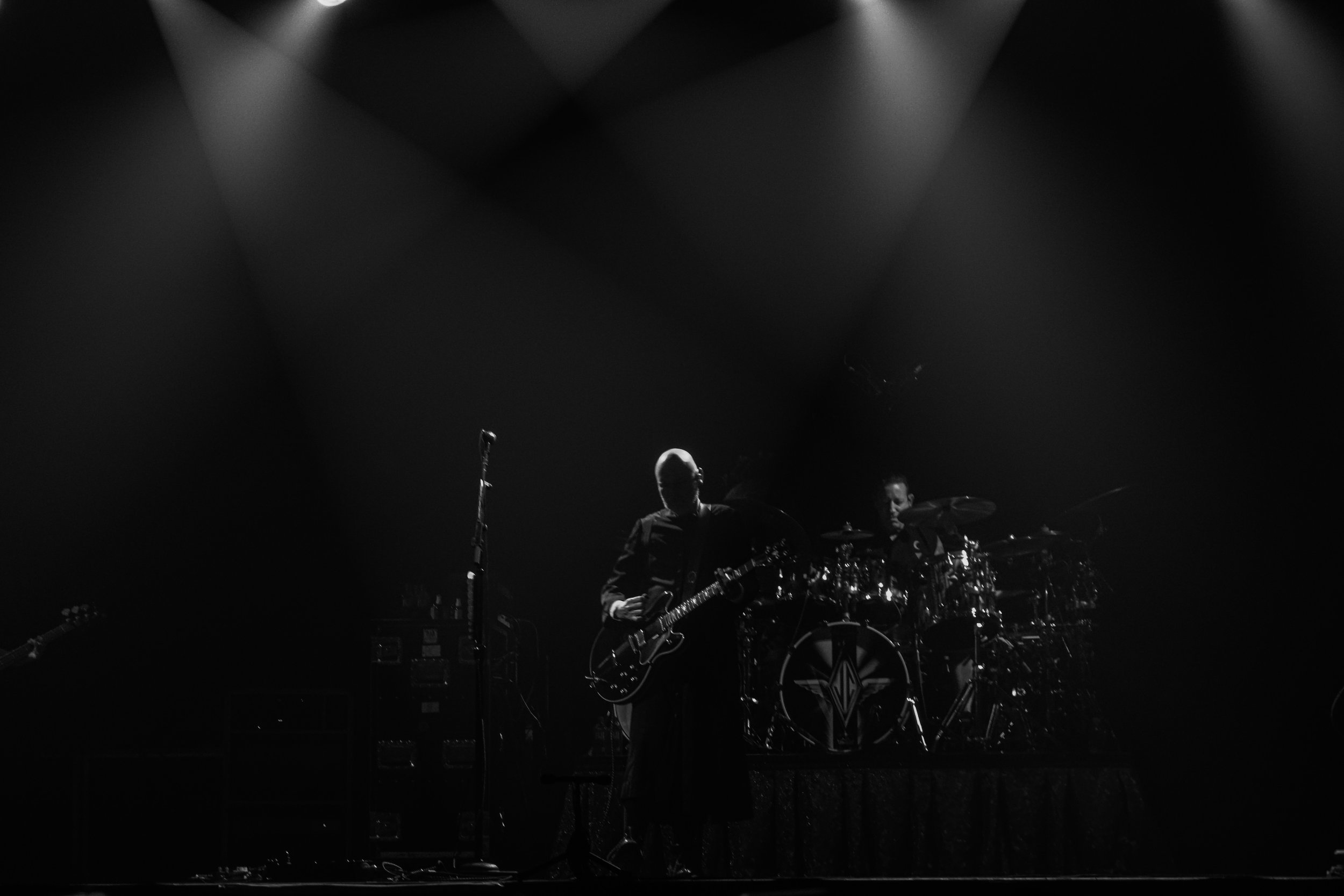Swim Into The Sound Turns Ten
/As of today, Friday, June 13th, 2025, Swim Into The Sound is officially TEN years old! Since I just waxed poetic about the site for our 500th post a month ago, I’ll try to keep this short and sweet.
After going back and forth for a while debating how to best commemorate this birthday, I decided it’d be fun to ask the Swim Team what their favorite album of the last ten years was. We’re counting everything from 2015 to 2025, and because I’m a real dork with it, we’re also only counting the window that this blog has existed: from June 2015 to June 2025—the last ten years to the day. I’ve organized everyone's answers in chronological order (Thank you, Lillian), and we’ve got some fun stats at the end for the Heads (Thank you, Braden), so keep reading after the roundup.
Before we get to the proceedings, I just wanted to say thank you. Thank you for being here; thank you for reading, sharing, writing, and supporting this little website. It means the world to me, and I am continually ecstatic to have this outlet to talk about the music that I enjoy and believe in. I think all the people you’re about to read would say the same thing. Thanks for ten years, and thank you for caring. As always, I hope you find something here to love.
Please enjoy this journey through the past ten years guided by your trusty Swim Team.
One Direction – Made in the A.M.
Columbia
Released November 13, 2015
One Direction hated being in One Direction by the end of it, and in 2015, they broke up. They actually never formally did this, but they released Made in the A.M., which is the closest they could get to ending things. One Direction songs aren’t vapid, but they are vague, leaning into the searing Bo Burnham analysis, “I love your eyes and their blueish, brownish, greenish color” at their weakest. There’s always some love that they want but can’t have. Made in the A.M., however, feels uncomfortable in that structure. Songwriter and appointed Cheeky One, Louis Tomlinson, used that framework to craft a goodbye rather than their usual popstar mystique. Finality underscores songs like “Love You Goodbye,” “History,” and “Walking in the Wind,” becoming bittersweet letters to fans rather than their usual tortured, lovesick songs.
The whole album sounds Un-Direction as well, with a rounder, synthier, stomp pop sound, something that matched their contemporaries rather than their discography. I love Made in the A.M. for that weirdness, even that title —a begrudging nod to the fact that all this was recorded in the grueling early hours of the morning on their tour bus as they traversed the world without Zayn Malik. And then that was just it. A couple live performances, a lackluster rollout, no tour, and a promise that the band would come back once they were off a needed hiatus. Now, 10 years later, the band won’t and can’t come back, but in the words of One Direction’s final song, “A.M.,” it’s okay because “I'm always gonna look for your face,” and as a forever Directioner, I really will always look for them.
– Caro Alt
Aesop Rock – The Impossible Kid
Rhymesayers
Released April 29, 2016
After much intensive deliberation, I feel confident that Long Island rapper Aesop Rock’s seventh album, The Impossible Kid, probably holds the most emotional weight to me of the thousands of albums I’ve heard since June of 2015. Originally my #3 record of the year after its release, it’s a proof of concept that tastes change and grow stronger over the years, and an album you listen to a handful of times in a 365-day span doesn’t have to be confined to that timeline.
Aesop Rock has been my favorite rapper since 2012’s Skelethon, and when The Impossible Kid dropped four years later, I was out of college and living on my own, making the first real transition to conscious adulthood. While much of Aesop Rock’s lyricism is abstract and conceptual, this album is his most directly personal across his discography, referencing multiple stories from his childhood and tributes to longtime friends and family. Particularly the song “Blood Sandwich,” the second verse of which Aes raps about his older brother being denied tickets to see Ministry, deeply affected me. Hearing two of my musical loves intersect in this way resonated with me, as I had gone through a similar experience when I was younger.
Whether he’s criticizing the ins and outs of the rap world (‘Dorks’) or boasting about his cat (‘Kirby’), Aesop Rock shines on The Impossible Kid in a way that is so specific to this album only. From a technical standpoint, it almost feels like he’s still trying to one-up himself, like on 2023’s head-spinningly impressive Integrated Tech Solutions, and even his just-released Black Hole Superette. But to me, there isn’t a rap album that speaks more to nerdy, introspective, and emotional youths than The Impossible Kid.
– Logan Archer Mounts
The Hotelier – Goodness
Tiny Engines
Released May 27, 2016
In 2016, I worked my first full-time job as a residence director at a private college on Long Island. I didn’t live far from my alma mater, so I was in this liminal space of young adulthood, where many friends were still at school while I worked a day job taking care of people just like them. It was a year of transition. I was shedding relationships, beliefs, and happiness.
My constant was music. The LI emo scene was instrumental for me. I had left all of my childhood friends in the city to make new ones at college. We moshed to easycore, pop-punk, post-hardcore, and what is now called “mall emo.” Being away from old friends, I grew perpendicular to them and my younger self. I became way too into my head. I needed to get out of it and touch grass.
Goodness came out just over a year after I graduated college. I felt ennui on Long Island, in my job, in my relationships. I couldn’t envision a life for myself there; Brooklyn, changed but still mine, beckoned me. I quit my job over some bullshit miscommunication about my dog, and didn’t look back.
The Hotelier kept me company on that final drive back to my parents’ house. With Franklin the pug in shotgun and my life packed into the backseat and trunk of my Civic, I yelled “I don’t know if I know love no more” to “Piano Player” while I sped down the Southern State Parkway. I embraced agnosticism on “Two Deliverances,” meditated on “Sun,” and considered death on “Opening Mail for My Grandmother.” I mourned a forever-lost love on “You in this Light.” I felt that chapter of my life close on “End of Reel.”
Revisiting Goodness now, I bloom in gratitude for that time, for this album, and for my life.
– Joe Wasserman
Touché Amoré – Stage Four
Epitaph Records
Released September 16, 2016
It was brutally hot the day my grandpa died. I had driven to his house to say goodbye, knowing that this would be the last time. I clasped his fragile hand and smiled through the tears that burned like fire in my eyes, trying to memorize every painful detail of those moments. Afterwards, I dragged myself out to my car in a haze, sliding into what felt like an oven as I gingerly closed the door. The silence was deafening, and I couldn’t bear to sit with it. The only album I wanted to listen to was one that had already carried me through years of pain and grief – Touché Amoré’s Stage Four. The album is both sonically and topically heavy, tackling the loss of frontman Jeremy Bolm’s mother to cancer. My grandpa died from cancer as well, and as I watched him suffer and wither over the course of a year, I returned again and again to Stage Four. I found myself taking comfort from Jeremy’s words as my heart screamed that I, too, knew this pain. Dense and beautiful, each song soars to massive emotional heights and crashes into frantic, melodic choruses as brutally honest lyrics about grief thread through the entire record. I was fractured like glass on that hot September afternoon, but Stage Four pieced me back together.
– Britta Joseph
Bon Iver – 22, A Million
Jagjaguwar
Released September 30, 2016
I was not thriving when 22, A Million dropped in September of 2016. I was living in a townhouse packed too-full of college dudes and scrambling to maintain a relationship that was winding down to its inevitable end. My undiagnosed scrupulosity (religious OCD) had reached a fever pitch, and I was functioning at peak neurosis, all atoms vibrating and neon.
I don’t know if any record has affected me so viscerally on a first listen. It might be over soon. God, I hope so. The new songs were beautifully damaged, everything pushed into the red, held together with desperation and scotch tape, as fragile as I was. While Vernon’s voice and the indie-folk-mad-scientist production were the first things to grab me, the occult symbolism and numerology proved genuinely unsettling; having grown up in a fundamentalist Christian sect, becoming obsessed with an album that quite literally takes you to hell and back was functionally my own bizarre, self-administered form of exposure therapy. I think 22, A Million is possibly one of the most influential records of the past decade, but I’m writing about it because it feels like it was made just for me. At the risk of overspiritualizing, its existence feels damn near providential. Well it harms me, it harms me, it harms me, I'll let it in.
– Nick Webber
Black Marble – It’s Immaterial
Ghostly International
Released October 14, 2016
I sometimes accidentally Pavlov myself into enjoying things. Half a decade ago, I had one too many jumbo margs, promptly threw up on the sidewalk, then trudged three long blocks home. When I fell on my bed, I thought, “You know what would really help these spins? Some electronica from New York.” I don’t listen to electronica or anything adjacent. At least I didn’t use to. I fell asleep, and in my drunkenness, I looped the album and immediately lost my phone behind my bed. I was too uncoordinated to stop it from playing for eleven full hours (surprisingly, I wasn’t too drunk to plug my phone in beforehand). I woke up a changed man, with a newfound distaste for tequila and a burgeoning love for a genre I never paid much attention to before.
These tracks have been with me for most of graduate school, and I have memories—good and bad—for each. I listened to “Frisk” 27 times in a row, mid-Covid, figuring out a single statistical mechanics question. Black Marble conjures full cities and surrounding landscapes, using understated vocalizations that seep into and become part of their masterful, bass-forward, fully synthetic creations. Through years and mile-high waves of self-doubt, It’s Immaterial is the buoy that has kept me afloat.
– Braden Allmond
The Menzingers – After the Party
Epitaph Records
Released February 3, 2017
When I think about records that have had a profound impact on me over the last decade, the fifth studio album, After the Party, by American punk rock band The Menzingers always finds its way around the top of the running every single time. Introduced to me during our junior year of college by my best bud and all-around punk enthusiast, Avery, I was immediately arrested by The Menzingers’ effortless song structures, candid lyricism, Irish-Catholic sensibilities, and the way the band unapologetically exudes “Americana.” After the Party tackles the daunting themes of growing beyond your reckless years, facing a new decade of adulthood, and reconciling with the most regrettable aspects of yourself – delivering it all in a way that kicks my ass upon every subsequent listen, but always manages to keep me coming back for another round. As I stare down the barrel of thirty-years old just a month from now, I find myself coming back to the repetitious line “Where are we gonna go now that our twenties are over?” from the album’s opening track “Tellin' Lies.” I’ve never been more uneasy about entering a new stage of my life than I am now at the edge of my twenties, but I’m also holding on to this comforting notion that the party ain’t over. Even though ultimately deciding on my “favorite” album of the past ten years feels impossible, I can’t think of another album that so accurately represents those years, nor feels more ubiquitous across them than After the Party.
– Ciara Rhiannon
SZA – Ctrl
Top Dawg Entertainment
Released June 9, 2017
Ctrl came out on my last day of high school. SZA’s full-length debut is now regarded as one of the most important releases of the 2010s, and it is certainly one of the most important releases of my 2015–2025. While a lot of albums from my teens exist in one fixed point of my memory, Ctrl has wiggled its way into every moment of change I’ve found myself in since its release. It played in my headphones on my flight to college, on my walk to my first class. It played at a consistent, low hum that emanated from my bottom bunk. I’ve screamed the words to “Prom” in mid-summer euphoria, windows down, sun out, ocean in my hair, driving a little too fast over the bridge. I’ve had pensive, tearful sunset walks to “20 Something,” wondering if I was ever gonna get my shit together. SZA has a way of making the most specific of situations feel universal, of summing up a generation's worth of anxieties into a few sparse lines (“Fearing not growing up / Keeping me up at night / Am I doing enough / Feels like I’m wasting time” couldn’t sum up my existential worries better). I mean, “Normal Girl”???? It’s like SZA ascended from the heavens and blessed girls everywhere with the soundtrack of their early adulthood.
– Cassidy Sollazzo
Manchester Orchestra – A Black Mile To The Surface
Loma Vista Recordings and Favorite Gentlemen
Released July 21, 2017
I sometimes get emotional thinking about all the people in my life who have loved me, who have cared for me when I was difficult to love or self-destructive. I’ve made it so hard on so many people, but I’ve been loved deeply. I especially appreciate this because we live in a culture that seems to communicate that love is earned. If you’re convenient, if you keep the scales balanced, don’t take more than you give. If someone can use you or extract something from you, then you’ll be loved. But I’ve been given so much grace. What the fuck.
Andy Hull has this ability to write songs about people who are ugly and hopeless, but you end up caring for them and identifying with them and wishing them well. You end up growing eyes to see the lonely and broken people around you. The folks that seem to get pushed out from the middle of the circle. This is the sort of album that makes me think maybe we can all learn to grasp Each Other and grasp God and grasp Love and actually make sure that none of us go it alone.
– Ben Sooy
Amen Dunes – Freedom
Sacred Bones
Released March 30th, 2018
Freedom is my favorite album of the last decade because, no matter how many times I listen to it, there’s always something new that I haven’t considered or noticed. It’s an elusive album for me. I can never quite put my finger on what's really going on with it. Is it a mystical bent on classic rock? Maybe it’s a long-lost adult contemporary album from the turn of the millennium, a dark and beautiful companion that might slide into a radio rotation filled with David Gray and Dido. Whatever it is, Damon McMahon gets it the most correct when on “Blue Rose” he sings, “We play religious music, I don’t think you’d understand, man.” He’s right, trying to wrap your mind around this music isn’t the point. It’s not present in our realm for the sake of classification and dissection; it’s here for experiencing and feeling. If your senses have not been graced by Freedom, then I suggest giving it a go on your next road trip, preferably a summer one, bonus points if it’s along the coast. That’s where you’ll sink into its essence.
– Connor Fitzpatrick
Parquet Courts – Wide Awake!
Rough Trade Records
Released May 18, 2018
Although released in 2018, I didn’t get around to Wide Awake! until 2020. Global pandemic, lockdown, nationwide protests over police killings. You remember. In the early days, it was a time to escape the rhythms of modernity and sublimate myself into the couch, subsisting on government checks, homemade mai tais, and Mario Maker 2. It’s there in my complacent crysallis that this album came like a nasty right hook to the spirit.
Dense with aphorisms both didactic and daring (“Travel where you are, tourism is sin” from “Tenderness,” or “What is an up-and-coming neighborhood and where is it coming from?” from “Violence”), the record, and its title track, serve as a clarion call to move and embrace and rage and shake loose the complacency. The record sounds like Parquet Courts, but their collaboration with Danger Mouse pushed their “Sonic Youth by way of Pavement” sound to new heights, yielding such joys as the 70s dance rhythms of “Wide Awake” or the pristine, soaring hopefulness of “Freebird II.” Part political polemic, part personal wound-bearing, each track on Wide Awake!, from its opening screed (the Tom Brady-hating collectivists’ handbook “Total Football”), to its closing track (the drunken bar singalong anthem “Tenderness”) the album is an anathema for alienation, a record that proves more and more valuable as time goes on. We don’t need any more televised killings or a global pandemic to shake ourselves awake. We’ve got all the tools here.
– Joshua Sullivan
KIDS SEE GHOSTS – KIDS SEE GHOSTS
GOOD Music, Distributed by Def Jam
Released June 8, 2018
In a lot of ways, KIDS SEE GHOSTS was the last hurrah of an era. Still years out from Kanye West torpedoing his career down the toilet, the 2018 “Wyoming Sessions” that brought sudden turbo-charged energy to the hip-hop genre with five weekly records from GOOD Music artists, including the legendary Queensbridge MC Nas, and even this group representing the friendship between Kid Cudi and Kanye. I reminisce about this time period fondly.
Cudi and West have a cosmic spirit within them that rises to the surface on each song throughout. They both bring out the best in each other, much like legendary actors Robert De Niro and Al Pacino do in the crime thriller Heat. KIDS SEE GHOSTS is only seven songs, clocking in at 23 minutes with 0% body fat. Together, they produce a psychedelic blend of pure, unabashed artistry at its finest. “Reborn” is a spiritual masterpiece of two guys standing at different crossroads in their own lives. West tapped into a realness and heart with his lyrics, but Cudi steals the show, sounding like he’s found the peace that has escaped him for his entire life. The “Keep Moving Forward” lyric could have been a mantra Cudi used during his own dark days. This song is something I listened to almost religiously, and have applied this phrase to my own life to this day. Tough times don’t last forever; there’s always hope on the horizon if we keep moving forward.
– David Williams
Gouge Away – Burnt Sugar
Deathwish Inc.
Released September 28, 2018
Gouge Away’s sophomore album, Burnt Sugar, is the sound of drifting bodiless through a life. It is the only album I can listen to when I feel like no matter how much I scream or cry or beg nothing will change, like when I can’t bear to get out of bed in the morning but have to get up because I’m out of sick days at work after I’ve used them all up on the countless depression addled exhausted mornings before this one, like when I’m a ghost, because no other album makes me feel less alone. This album sounds suffocating, like a hand around your neck as Christina Michelle screams of the ways she tries to stay grounded. If you need an album to keep you company, I’d suggest a whiff of Burnt Sugar.
– Lillian Weber
The Happy Children – Same Dif
Self-Released
Released June 18, 2019
Aside from some ambient essentials and recent Beatles reissues, this semi-obscure album (if you didn’t live in Minneapolis in 2018) has filled my headphones more than any other over the past decade. A decade of scrobbling doesn’t lie. The Happy Children were usually a trio, founded in the late 2010s by Caleb Wright and Mitchell Seymour. The group bubbled up with a mix of damaged art rock and the washed-out electronics that Wright would bring to his future production work. Their parting gift was a compulsively listenable, dynamic octet of songs, mapping the beginnings of dozens of paths not taken.
Same Dif remains a small miracle of experimental pop and marvelous weirdo rock about loving your friends, released at the crest of a surging wave of Minneapolis DIY music. For some strange streaming reason, the piano-pop closing track, “Bubblegum,” has 25 times more streams than the banger single with a video. It’s a pinball machine of a record, full of oddly hued lightbulbs, chiming jingles, and generous sound design; refreshing in how baffling it feels for the songs to get stuck in your head for days. The Happy Children ended just in time, precisely when they meant to, with a marvelous swan song.
– aly eleanor
Purple Mountains – Purple Mountains
Drag City
Released July 19, 2019
David Berman’s Purple Mountains is the authentic account of a man with nothing more to lose. There is a lot of pain found throughout the album with songs like “All My Happiness is Gone” and “Darkness and Cold” providing little to no hope or comfort. Berman’s songwriting on Purple Mountains is vulnerable, unflinching, and blunt—the most straightforward and least obtuse lyrics of his career. There’s little room for interpretation with lines like "the end of all wanting / is all I’ve been wanting" in album opener “That’s Just the Way That I Feel.” Thankfully, Berman’s opus is full of his signature humor and astute observations to balance out the ever-present sadness.
Self-loathing is often met with incredible self-depricating wit: "If no one's fond of fucking me, / maybe no one's fucking fond of me" Berman states on "Maybe I'm the Only One for Me.” Punchlines and comedic scenes regularly couple moments of despair. “I nearly lost my genitalia / to an anthill in Des Moine” is a really funny thing to say shortly after saying “this kind of hurting won’t heal.” This needed comedic relief on the bummer numbers takes a break when Berman pivots toward the mundane. Scenes of snow falling or grief-stricken recollections of his mother are treated sincerely, resulting in perhaps his most serene and beautiful recordings.
The loss of love, God, and spirit permeate Purple Mountains, but penultimate track “Storyline Fever” (a top 5 Berman song, if you ask me) gives us a glimmer of optimism that makes the album worthy of repeat listening: “you got to find a way to make it work / 'cause defeat is where your demons lurk.”
– Russ Finn
Walter Mitty And His Makeshift Orchestra – Puddles of Alligators
Making New Enemies
Released September 6, 2019
When I was first introduced to Walter Mitty and His Makeshift Orchestra, I had largely outgrown my hardcore/mall emo phase and was going through my indie fuckboy college era. That said, my frame of reference for “indie” was relatively narrow, mostly guided by whatever my Tumblr feed was currently obsessed with: Mac DeMarco, The 1975, Arctic Monkeys – not necessarily “indie” in the traditional sense, but I took the feed as bond. You can only imagine how my world was changed when I learned of DIY culture through Walter’s music, how everyday people were making art while working jobs or going to school, playing shows at houses and garages, printing shirts in their backyards. I’m blessed to have been introduced to DIY culture with Walter’s music, which I still listen to over a decade later. Puddles of Alligators is a collection of B-sides and loosies, some of which are staples with the Walter heads, while others made their debut with this release (the backyard performance of “Mellow” went platinum on my YouTube, years before this collection dropped). Even in a collection of loosies, Walter’s sharp songwriting and rhythmic guitar shine bright. And knowing that it’s just a bunch of buddies making music together, without a studio or contract forcing them to, makes it nothing short of magical.
– Nickolas Sackett
Charli xcx – how i’m feeling now
Atlantic Records
Released May 15, 2020
At the end of 2019 and the start of 2020, I graduated from college, married my forever wife, and started my first big-boy job, all in the span of four weeks. I was working as a design engineer for a small company in a small Texas town outside of Austin. I was fresh on the scene and eager to please, which meant that once I was able to work from home, I was working all the time. I don’t remember exactly when I first listened to how i’m feeling now, but I do remember the shift that happened to me once I did. Before Charli, my go-to focus music was Frank Ocean’s Blonde and the soundtrack to Prince Avalanche. how i’m feeling now became a companion during the early mornings alone at the office, playing catch-up, and throughout the nights working from home while my wife was on a night shift. Charli’s familiar pop music sensibilities stuck me in the glue trap for the ripping saw-blade production to leave my eyes darting side to side, trying to trace its path. My After Charli Period has been filled with the PC Music universe, a massive amount of Whole Lotta Red, months of hard bop and free jazz, and whatever is playing on NTS Radio. This album is important to me because it marks a shift in my brain – a shift in how I see and value music. What was once a single-sided experience of sound waves hitting me now has the ability to be a two-way street. I realized that someone has to be wriggling around in that glue trap for the songs to really have impact.
– Kirby Kluth
Slaughter Beach, Dog – At the Moonbase
Lame-O Records
Released December 24, 2020
I’ve always loved the way that training lineage is tracked in Brazilian jiu-jitsu, providing a family tree of student/teacher relationships that directly connect modern practitioners like Mikey Musumeci to Carlos Gracie and the sport’s creation. Although Gracie passed away before Musumeci was born, we can examine this lineage and see how his impact was still felt through osmosis, with the knowledge the old master passed on to his students working its way down the line to those pursuing the sport today. Rock music doesn’t feature this same kind of rigid hierarchy, but I think it’s at its best when you can discern a similar sense of history from it. This is why At the Moonbase is such a special record; it’s the place where Slaughter Beach, Dog’s sound transcends the current moment and connects with the legacy of all the great singer-songwriters who came before it.
There are some more obvious sonic connections here—for example the way the spoken word delivery on tracks like “Do You Understand (What Has Happened to You)” and “Song for Oscar’s” bring to mind the work of Craig Finn—but even beyond that, the storytelling throughout the record calls back to the tradition of artists like Harry Chapin and Jim Croce (not to mention there is literally a song called “Van Morrison”). The album serves as a continuation of a bardic style that for so long has been a bedrock of popular music, doing so with a fresh sound pushed forward by Jake Ewald’s incredible arrangements. “A Modern Lay” is a masterclass in songwriting. “My Girl” does so much with so little. Not one bad song on the record. Thank you Slaughter Beach, Dog.
– Josh Ejnes
Porter Robinson – Nurture
Mom+Pop
Released April 23, 2021
Sometimes a record comes along at the right place and the right time, setting off a chain reaction that completely shifts how you view music and the world around you. It was the spring of 2021, and the northeast weather was starting to loosen its cold grip. I had just received the first dose of the COVID vaccine, and I began to see some of my friends in person again for the first time in over a year. Coming from someone who listened almost exclusively to heavier music at the time, the soundtrack of my reintroduction to the world came from a sonically unexpected place: a glitch pop album.
I consider Nurture to be a landmark record in my journey not just as a music listener but also as a human being. I found myself moved by Porter’s lyrical articulations of feeling alive for the first time and holding what you love close to your heart amidst a comforting blanket of electronics. It shifted my brain from a sizably individualistic worldview to a more communal mindset, guiding me to fully appreciate and support the people in my life that made me who I am. The record encouraged me to seek out more versions of this glitchy yet exciting style of music, leading me down the road of alternative music and eventually landing me into a more well-rounded musical palette. I feel indebted to this album for making me a better person and giving me the confidence to confront my fears head-on.
TLDR: If you knew me before Nurture, no you didn’t.
– Samuel Leon
Wednesday – Twin Plagues
Orindal Records
Released August 13, 2021
Even though this prompt was my own damn idea, I had the hardest time whittling down to decide what album was truly my favorite of the last decade. At times, I found myself waffling between Psyhopomp, New Hell, and a slew of emo bullshit (complimentary). Ultimately, I wound up pulling Wednesday’s sweltering third album, Twin Plagues. I’ve written at length about my love for this record as well as this band, and it’s been an affirming thrill to watch this crop of North Carolina artists rise to worldwide indie rock prominence over the last few years. While I have love for everything that came afterwards, Twin Plagues will forever hold a special place in my heart as an album that helped me through a dark time and inspired me to find the strength to pull myself out of it. The true testament is that I can listen to the record today and not be dragged back into those depths. I still get swept up in the shoegaze crush of the opening title track. I still am mesmerized by the seesaw riff in “Handsome Man.” I still think “How Can You Live” is one a goddamn miracle of a song. Much like Sufjan’s Michigan pointed me to Detroit years before, when I found myself moving to North Carolina in 2023, I looked to Twin Plagues as a sort of affirmation that I was heading in the right direction. After two beautiful years in this state, it turns out I wasn’t wrong.
– Taylor Grimes
Alvvays – Blue Rev
Polyvinyl Record Co.
Released October 7, 2022
I’ve been listening to power pop and indie rock for longer than I’ve known what either was. R.E.M. was the first band I ever knew the name of, and from that point on, I was raised on a steady diet of ’80s and ’90s alternative courtesy of my Gen X parents. I’d hazard a guess that the masterminds in Alvvays had a similar upbringing because Blue Rev plays like a crash course in the sound of the first twenty years of my life. The guitars alternate between a supercharged fuzz and the vibrant jangle that I fell in love with as a child in the backseat of a beat up Honda Civic. Every synthesizer feels handpicked to evoke a specific memory in my mind. Oh you like shoegaze? Hit play and you’re immediately hit with “Pharmacist.” Maybe you’re a lifelong new waver - that’s okay, “Very Online Guy” and “Velveteen” have you covered. If the R.E.M. shout perked your ears up, crank “After the Earthquake” up to max volume and then wonder why you’re still reading this instead of bouncing off your own walls.
All that would mean dirt though if it weren’t for Molly Rankin’s constant towing the line between wry wit and genuine pathos as both a singer and songwriter. In true power pop tradition, she’s able to wring both a laugh and a tear from her listeners, sometimes even with one twist of a phrase. On Blue Rev, she invokes heroes that range from Tom Verlaine to Belinda Carlisle to weave 14 perfect vignettes of loneliness, longing, and waiting. As someone who was entering their third decade far too used to disappointment, wasting time waiting for life to start, hearing an album I’d been anticipating for almost half a decade knock it out of the park was a near revelation. I’ve changed a lot in the two years since Blue Rev’s release, and my taste with me, but if I ever do reach back, it’s likely with Alvvays: all my favorite records and the boy I was rolled into one 38 minute package that ends with a dare: “Now that you’re around, take another shot.”
– Wes Cochran
Arm’s Length – Never Before Seen, Never Again Found
Wax Bodega
Released October 28th, 2022
This one grew on me in ways that growth is painful, yet cardinal. Akin to when you’re forced to accept that someone will never be the same as they once were, putting down your suffering dog, the bone-stretching growing pains while lying in your middle school bed at 3 AM. It feels like I’ve ached through a great deal of that sort of growing in recent years, in that same sense: that growth is often painful, yet essential.
What they don’t tell you about entering your mid to late twenties is the heap of emotional weight you suddenly bear as your frontal lobe fully develops, plopping all your demons and skeletons front and center for you to deal with amidst the rest of your shiny new adult responsibilities. Never Before Seen, Never Again Found found me tangled in uncomfortable growth, and even though it’s an emotionally painful listen, it’s completely necessary. The album is vulnerable in every way that I hope to be, airing out tumult with grief, religion, and identity. Arm’s Length crafted an all-timer in this one– a modern day Home, Like No Place Is There– with not a single skippable track in sight. This is the type of album that you put on at your lowest; to go blow-for-blow with your dread. It’s strange that we tend to listen to sad music when we’re sad. Perhaps we need to simmer in the sorrow and wallow in the bad luck before we can rise and ask ourselves, “Is it just my luck?”
– Brandon Cortez
Basque – Pain Without Hope Of Healing
No Funeral Records
Released March 22, 2024
When compiling a list like this, I am stressed. My favorite albums, even my favorite favorite albums, are often a moving target. Like a sequestered pond hosting a slew of migratory birds, the songs I become most passionate about are subject to climate, to season, to temperature. One flock leaves as soon as June hits 98°, another to arrive when a fall sunset triggers a wistful memory. So even though the last ten years have hosted an almost uncountable number of classic, iconic, and incredible albums, I am beholden to my obsession of the past year; this flight of fancy that has consumed me fully. And perhaps next year I’ll think myself insane for believing it, but the final Basque album is effectively perfect from start to finish. An unreal meditation on the agony of self-loathing, the album's lyrical despondency would feel too much if every performance on it weren’t a pitch-perfect match. With vocals that howl and shriek in perfect tempo, guitars turn on a dime while bouncing and wailing, a bass that hammers like knuckles to plaster, and what has to be one of the greatest drum performances ever put to record in this genre. Pain Without Hope of Healing is easily one of the finest screamo records of the last decade.
– Elias Amini
Swim Into The Stats
Hello, and welcome to the nerdy part after the article where we talk about STATISTICS. Think of this like the scene that plays after the credits–a fun little bonus for the real heads that want to stick around. This is a spiritual successor to something we published at the end of last year called “Swim Into The Stats.” While that article focused almost exclusively on 2024 in review, we are now shifting to look at the entirety of this blog’s run over the last decade. Thanks to Braden Allmond for wrangling all this data and rendering these spiffy charts; it’s a trip to see this website’s history condensed in such a visual way.
First, here are all the articles we've published over the last decade, displayed as a noodlepoint scatter plot with a different color for each year. It’s cool to see this rise (more or less) year after year as I began to take the site more seriously and also feature more contributors. It's also interesting to see my life in the gaps, such as moving across the country in the fall of 2023 or absconding from all responsibility in July 2024.
This git-style plot shows a grey box for every day in the last decade, and a blue box for every day Swim posted. It makes sense that Friday is usually spoken for, given that’s when new music releases and we like to be of the moment whenever possible. You can also see my commitment over the last couple years to not really post anything on the weekends.
Focusing just on 2025 for a bit, it feels like we’re moving at a pretty steady clip. Most of these are reviews, which makes sense, but I like seeing the interviews, features, and roundups strategically scattered throughout.
Examining the number of unique authors in this bar chart is probably the easiest way to illustrate how collaborative this site has become. Sure, it’s still me running this thing, editing and wrangling reviews, but it’s all the beautiful, lovely people above (and throughout our ten years) that have brought a wealth of voices, perspectives, and tastes to the forefront.
Finally, let’s end with some dessert. This delicious pie chart shows a breakdown of total articles by year. It’s wild to see 2024 taking up over a quarter, but other than that (and a slender 2015 and 2016 as we got off the ground), everything else feels pretty evenly split.
Finally…
There ya have it. Ten years of albums from our esteemed Swim Team, some retrospective charts to show off our growth, and a whole lotta gratitude on my part. I’ll just say it again, especially if you made it this far, but thank you for being here. I love music, and running this website is just something that makes sense to my brain. I gotta get this adoration out somewhere, and the fact that anyone reads this regularly, contributes, or cares in any way is a little bit brain-breaking to me.
Whether you’ve been reading for years or are totally new, thank you for being here, and thank you for helping us get here. Here’s to Ten Years of Swim.





























